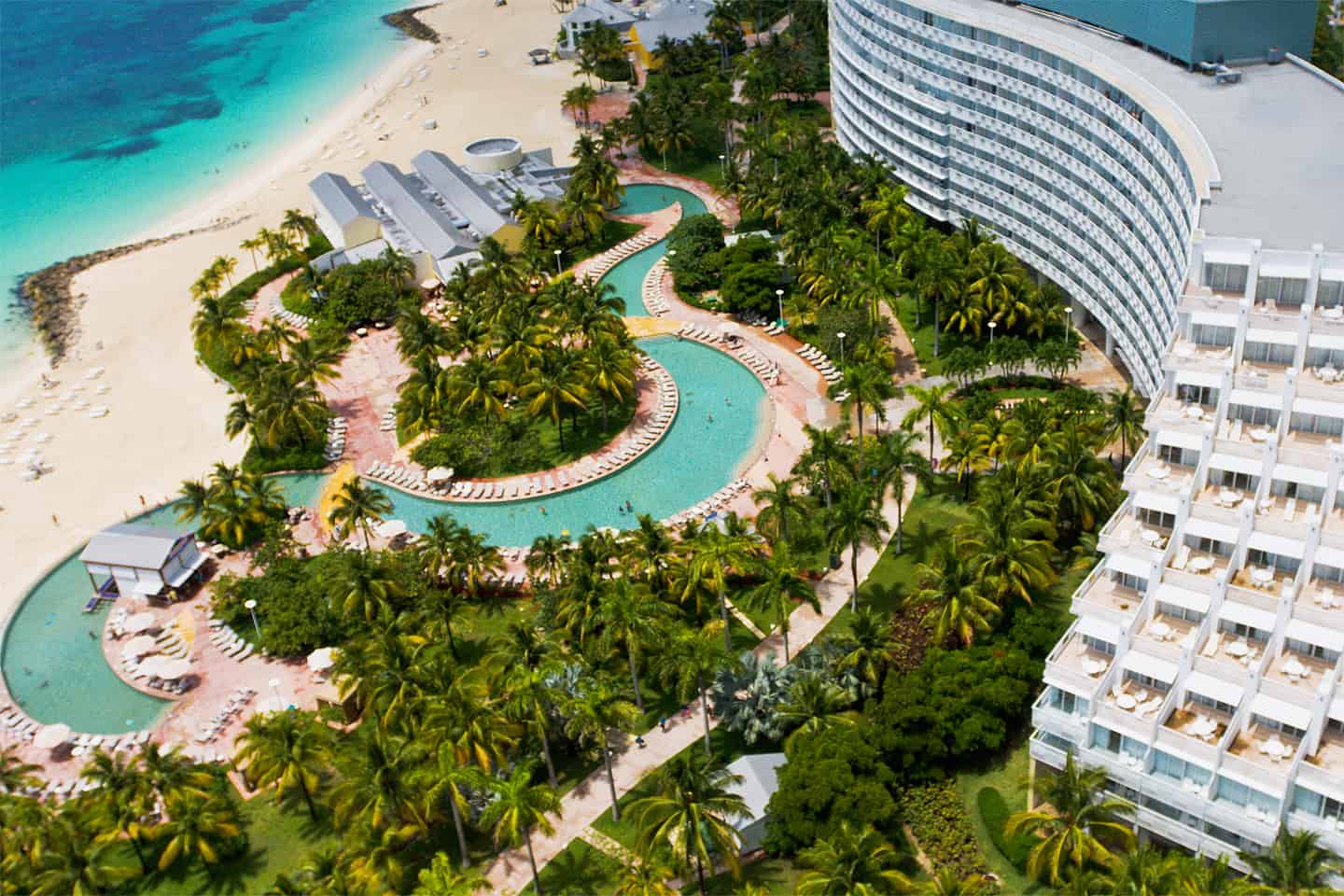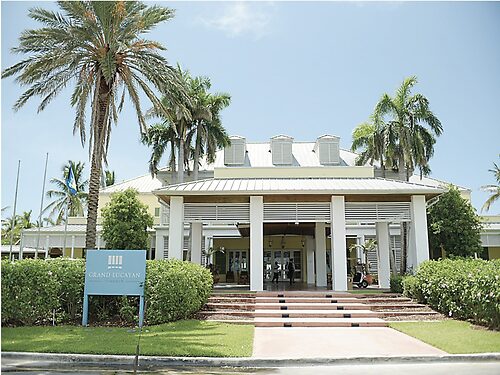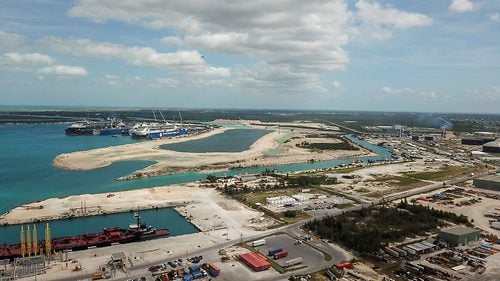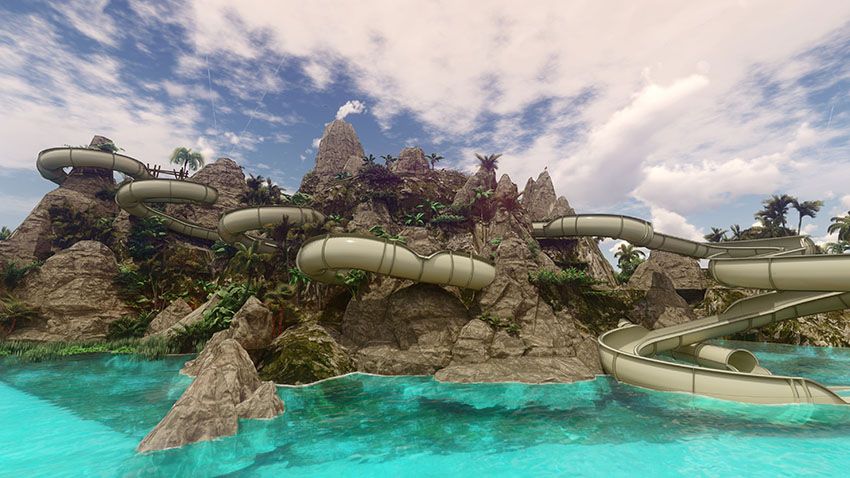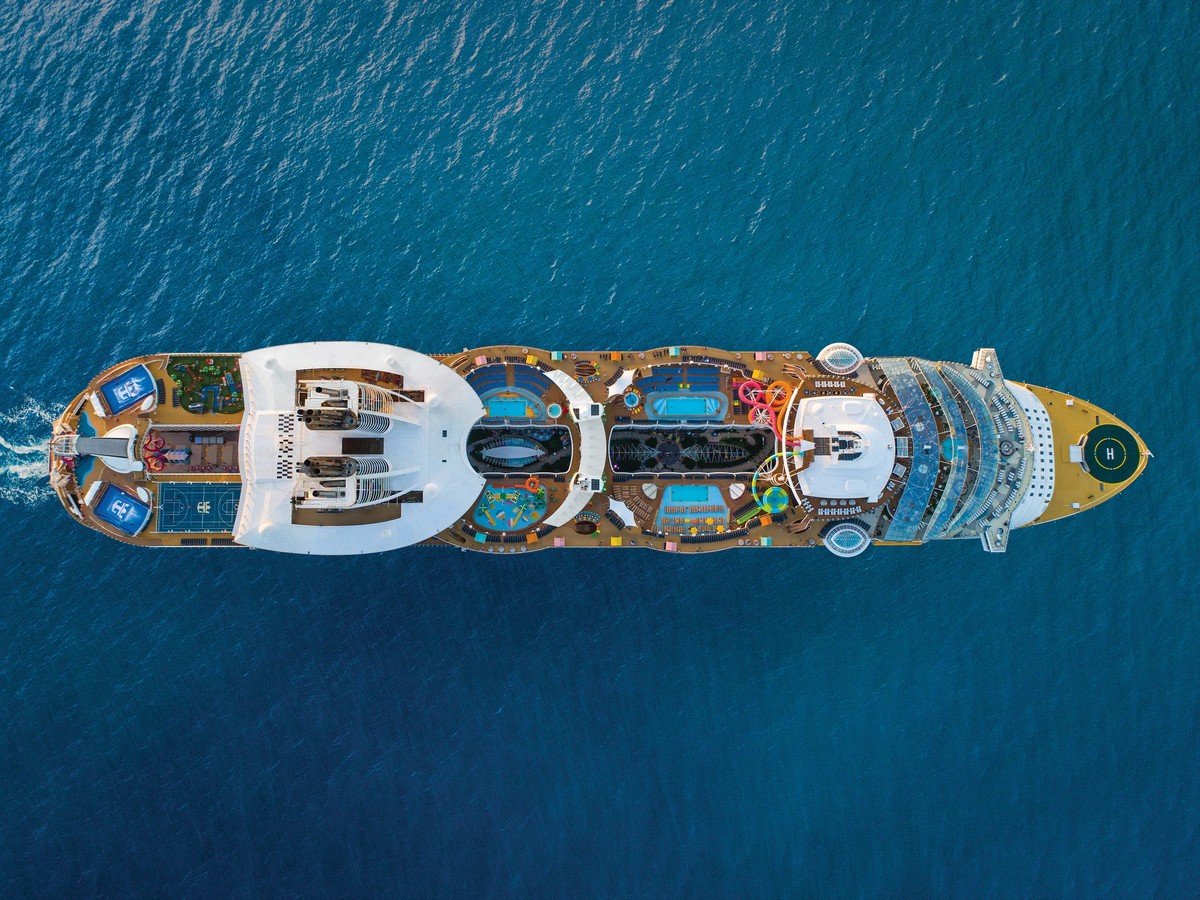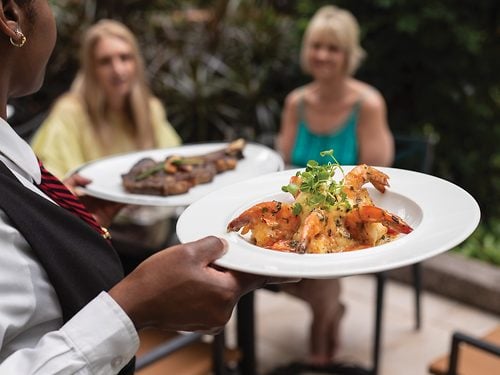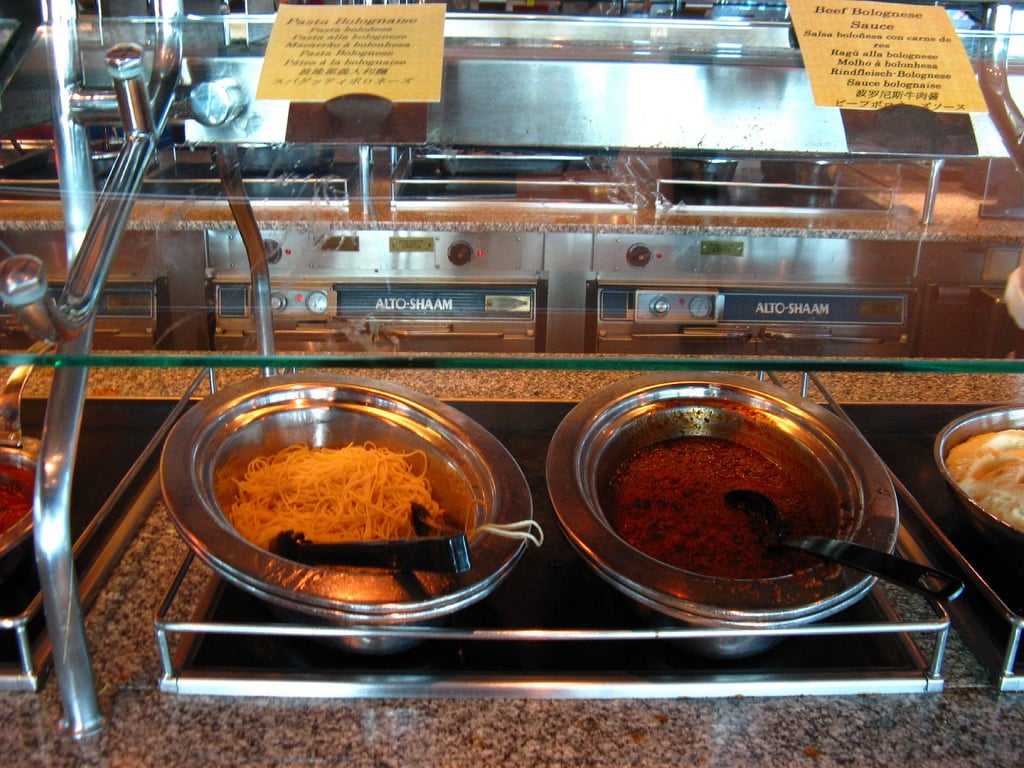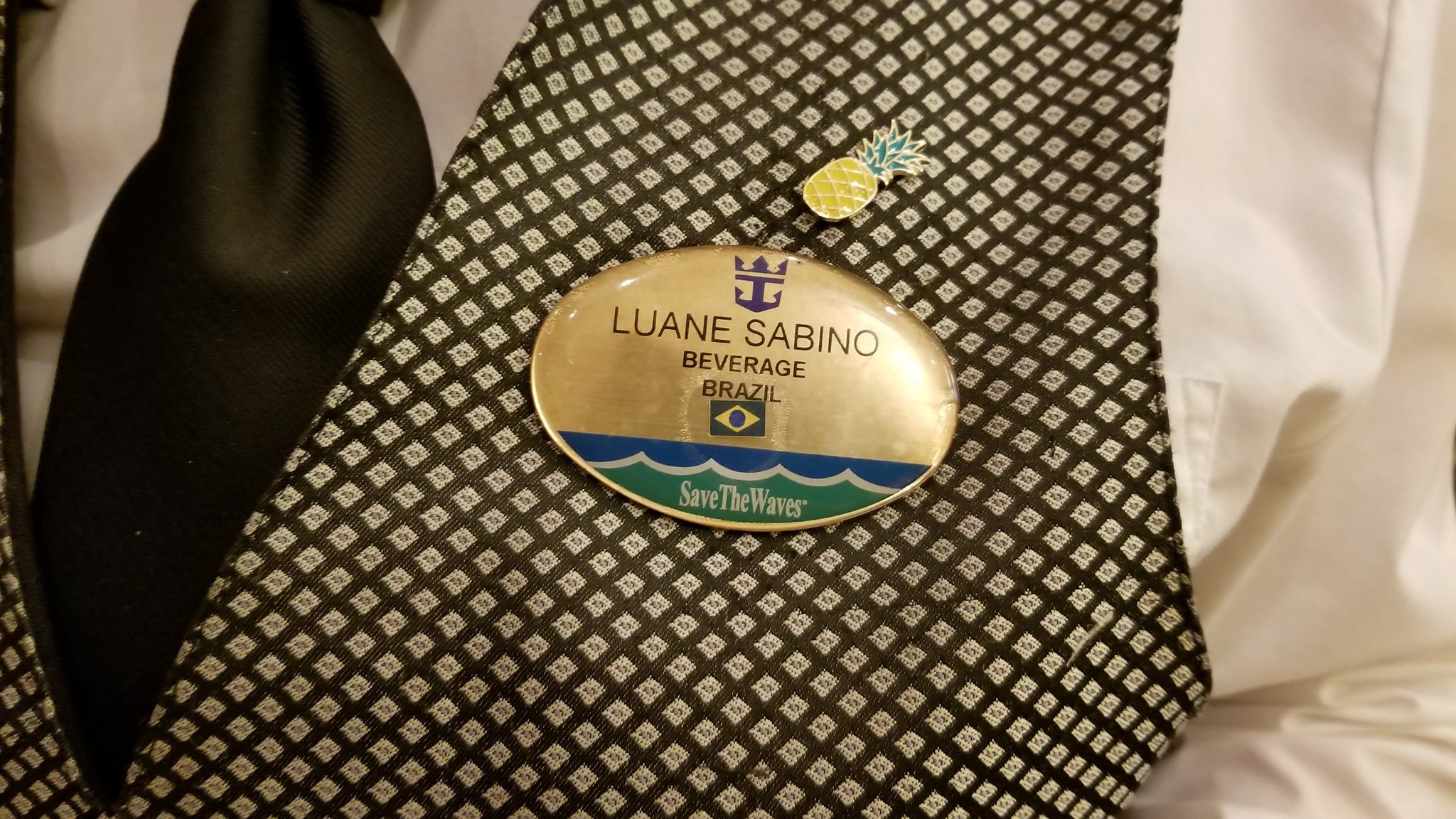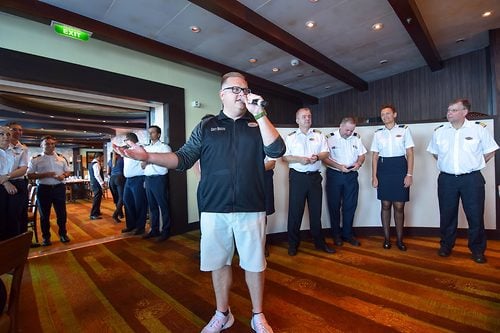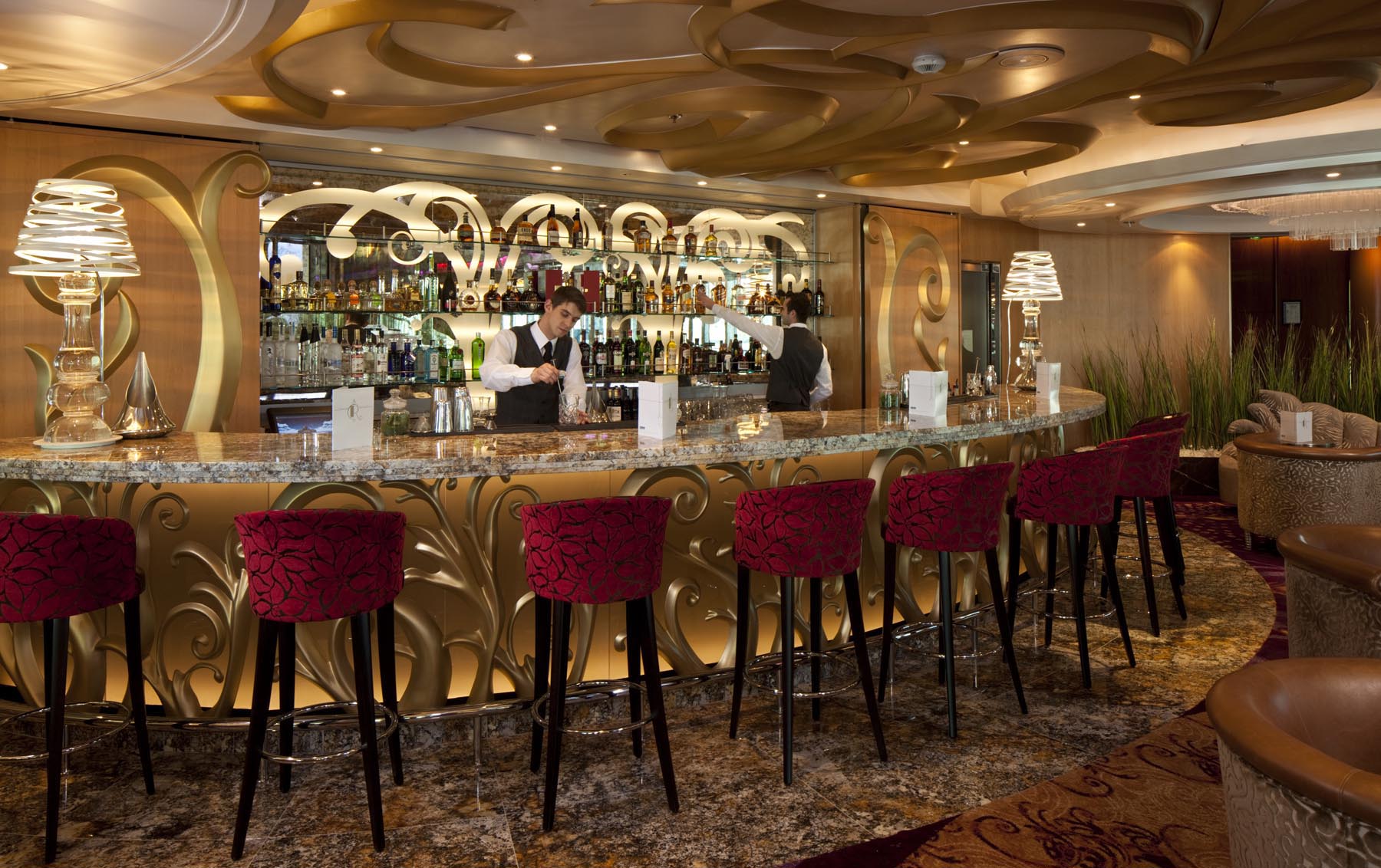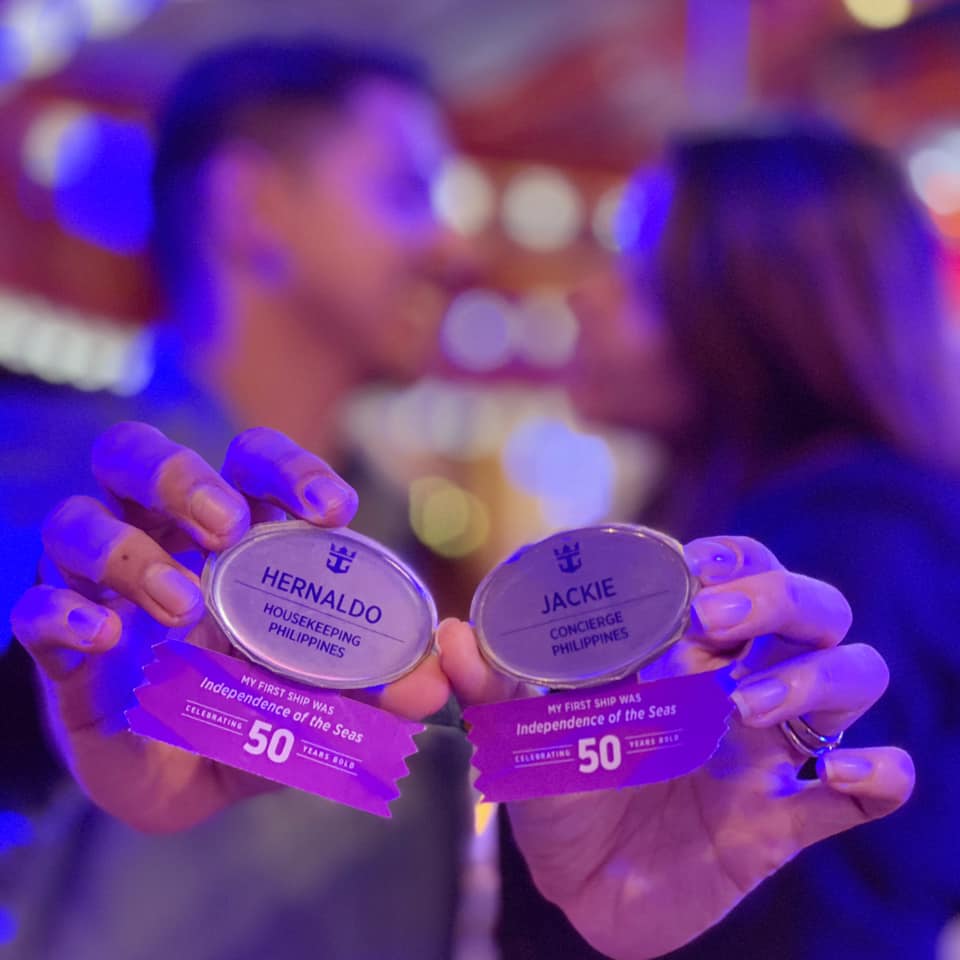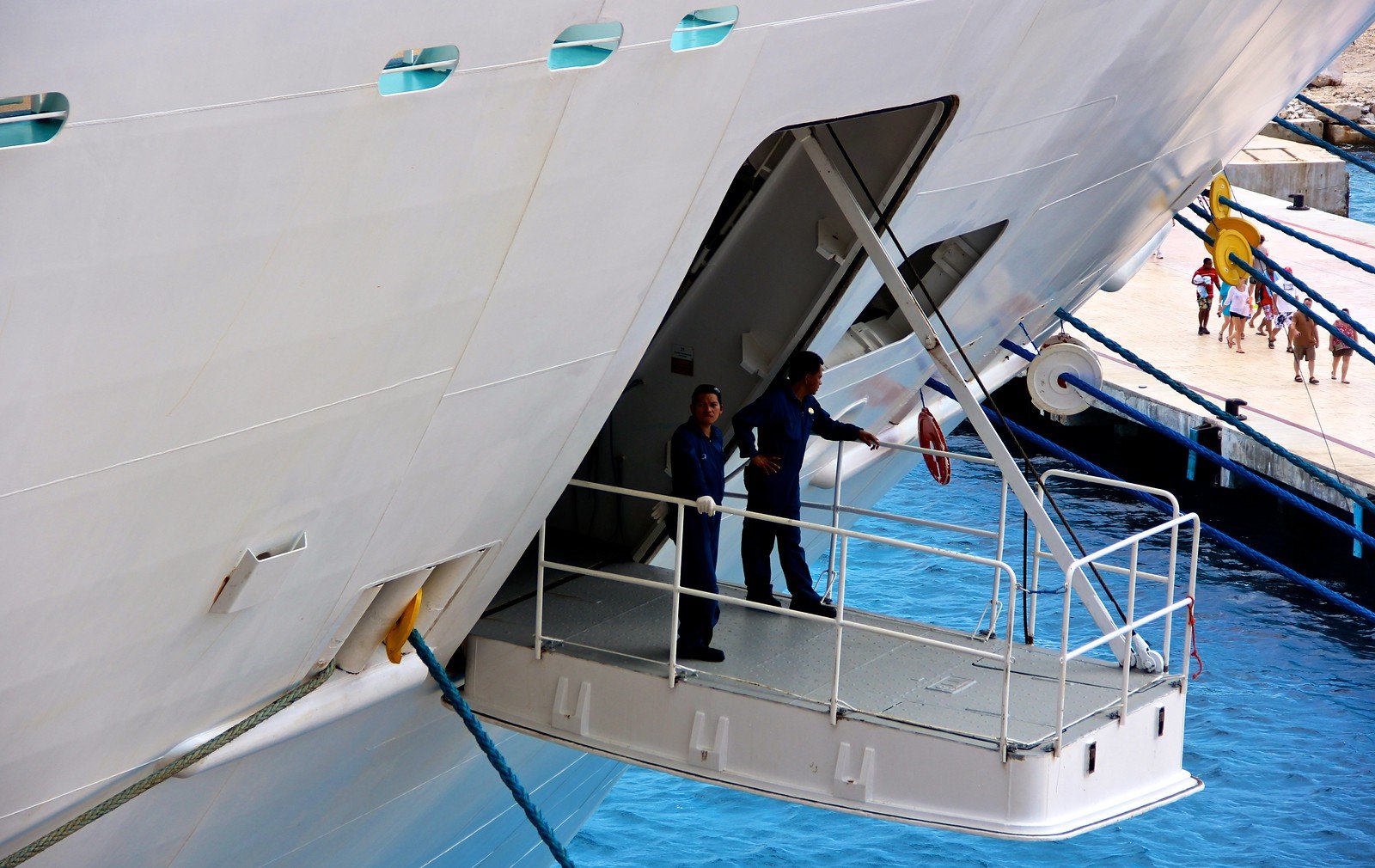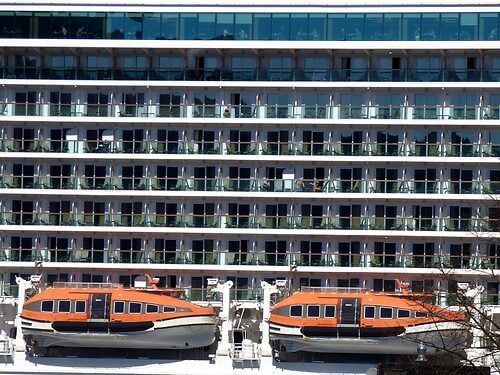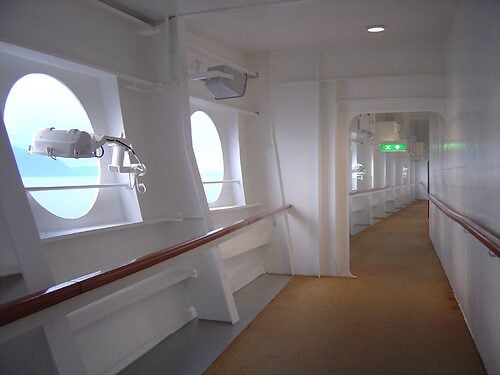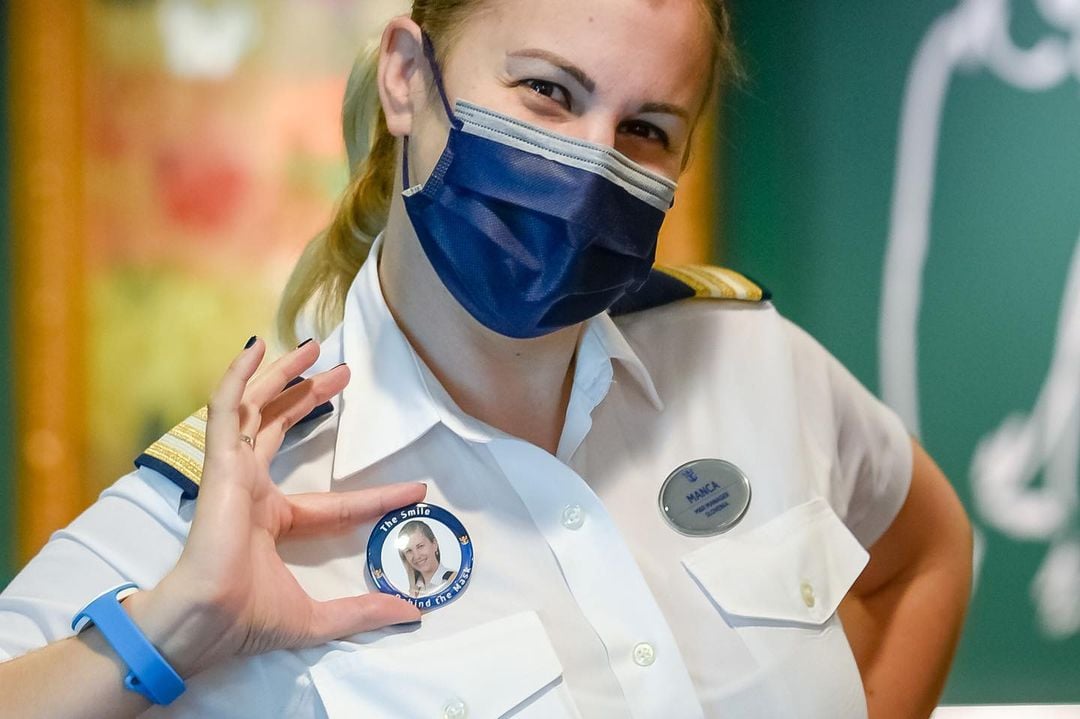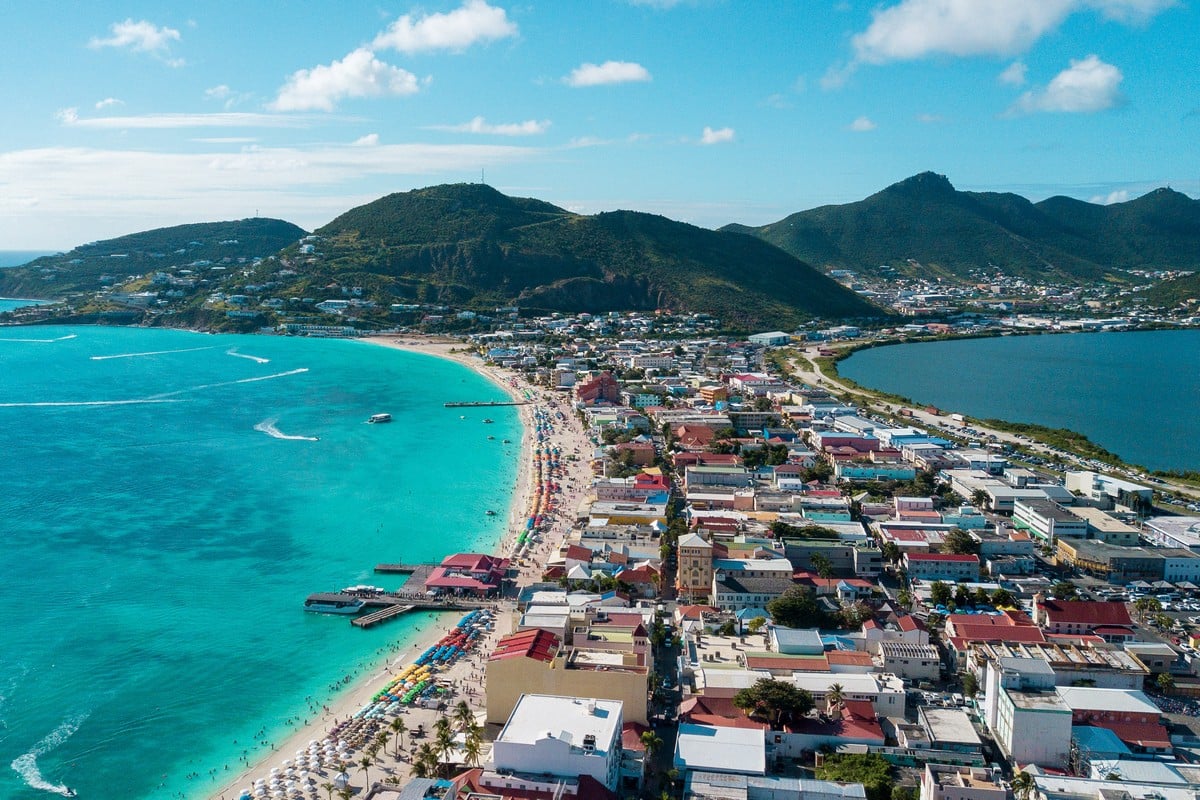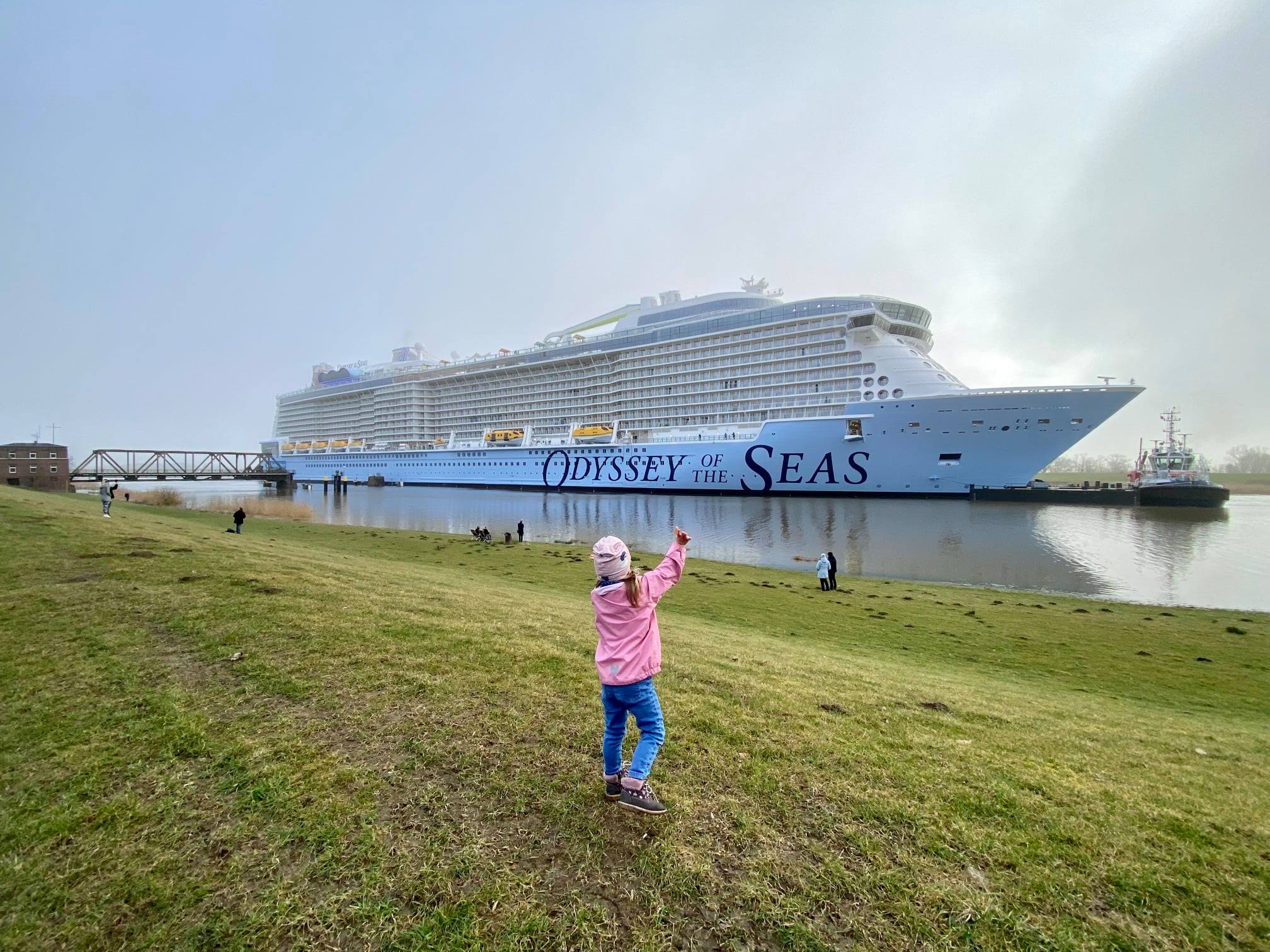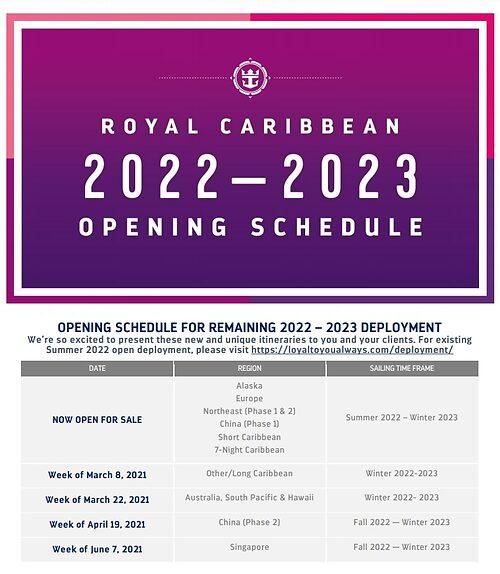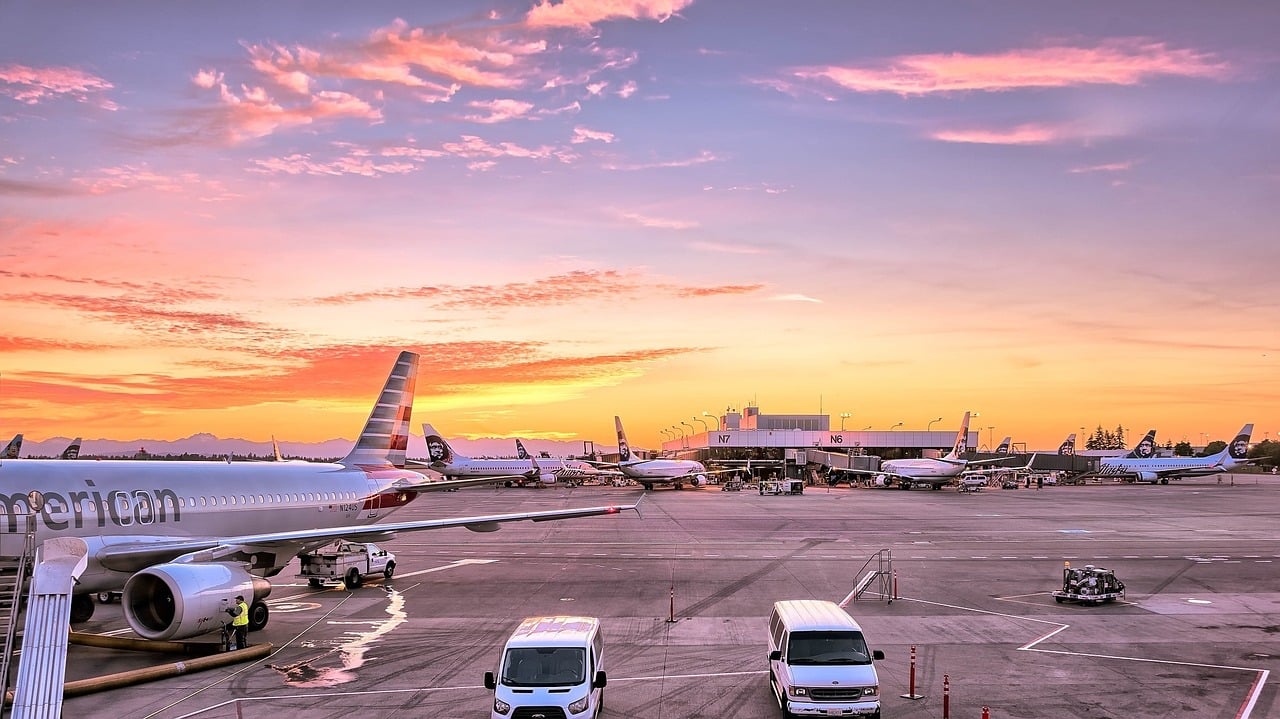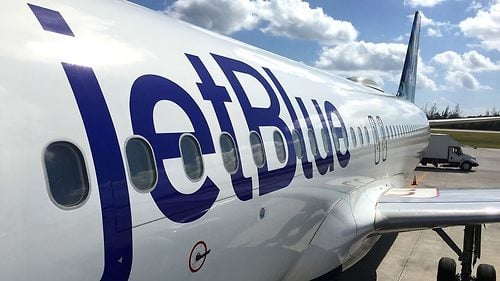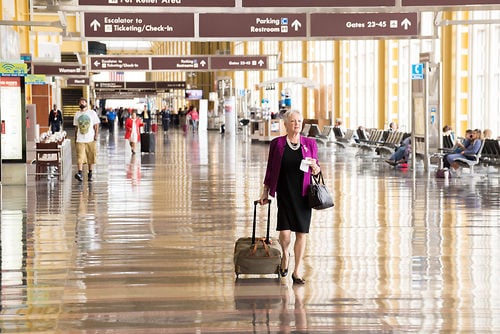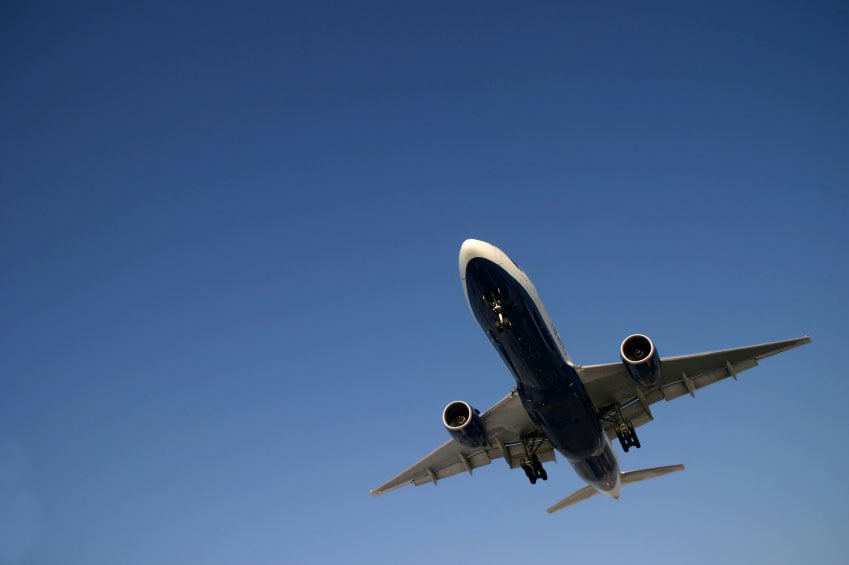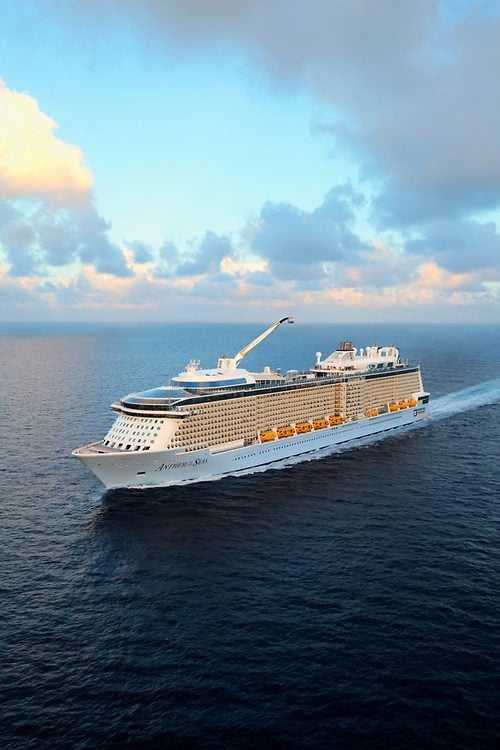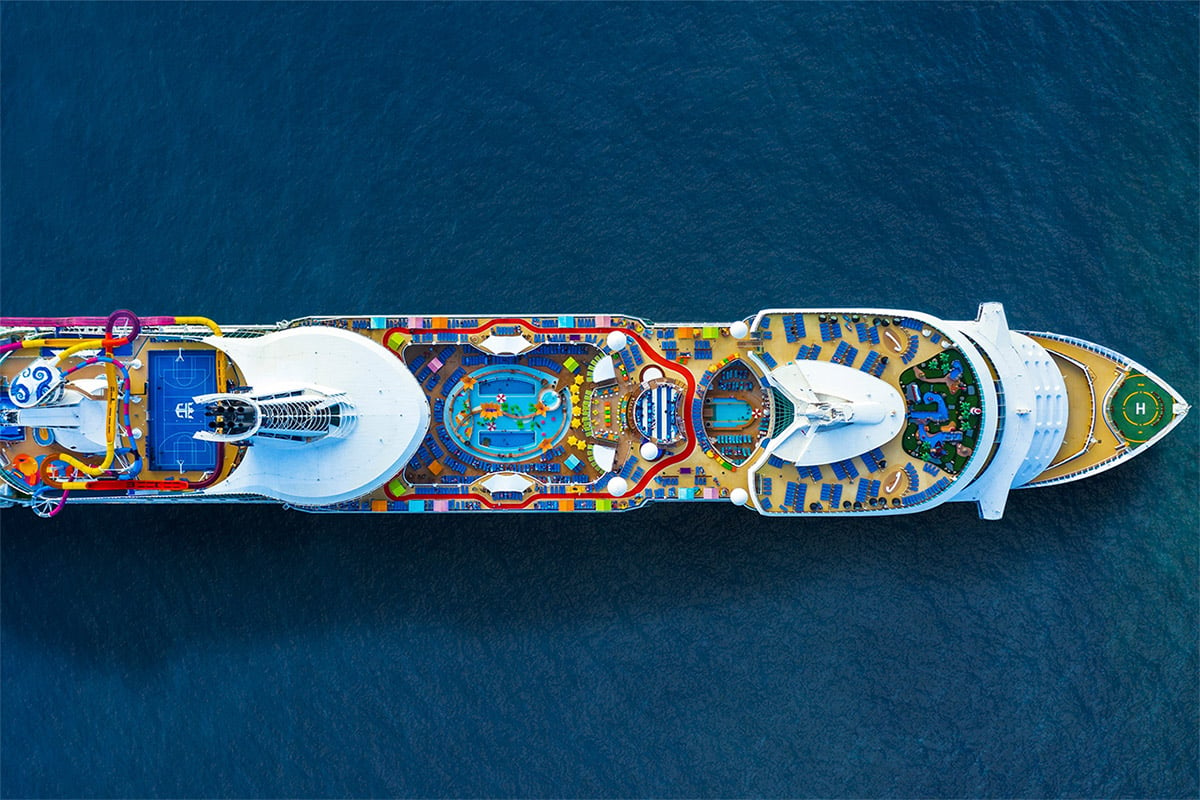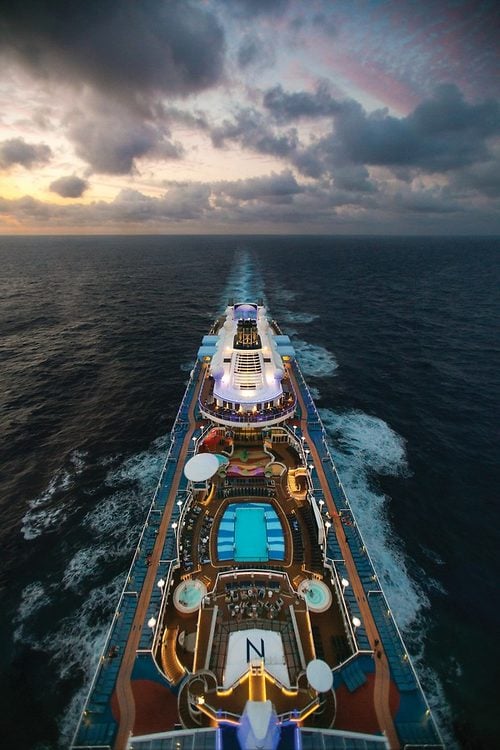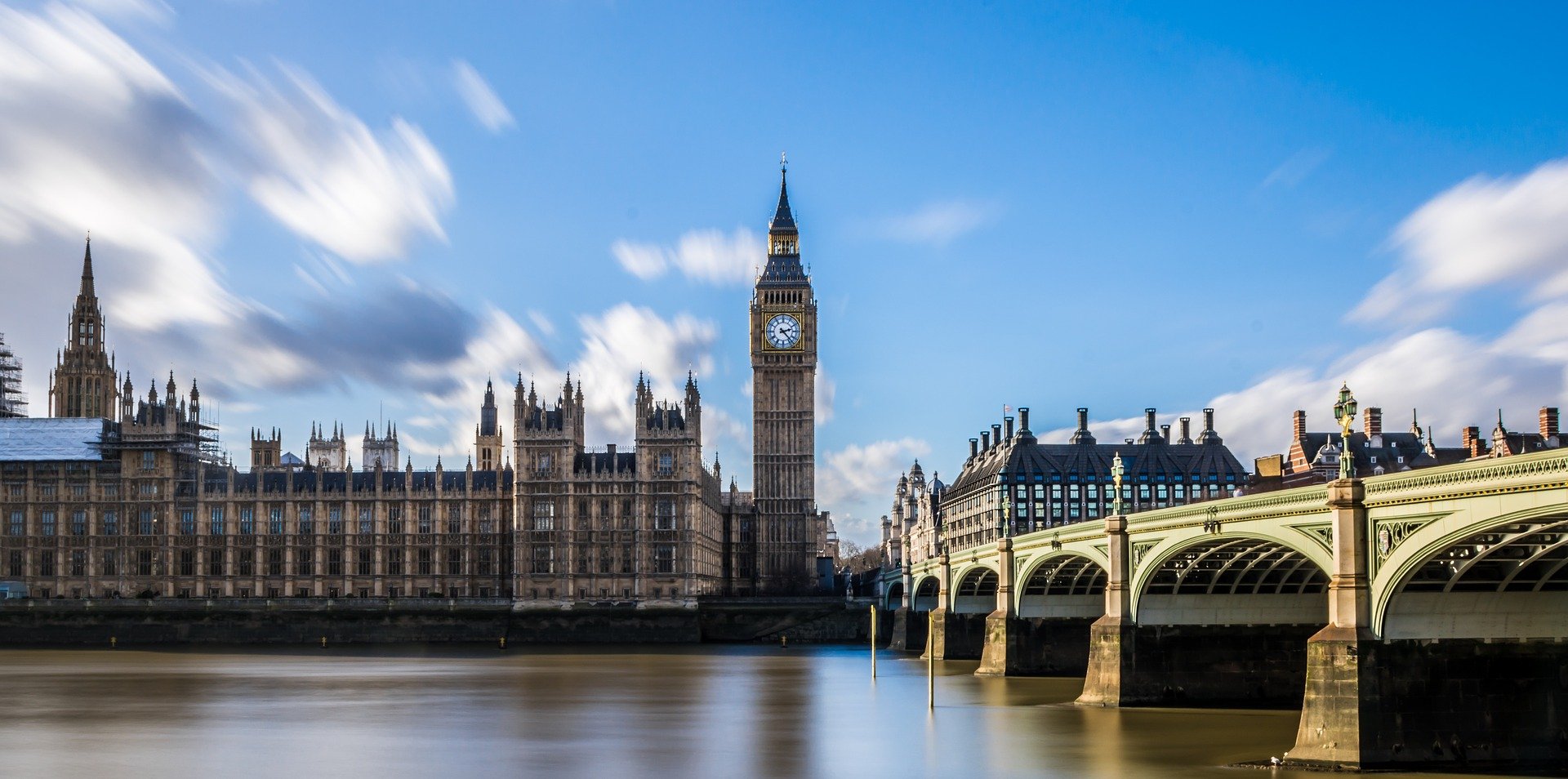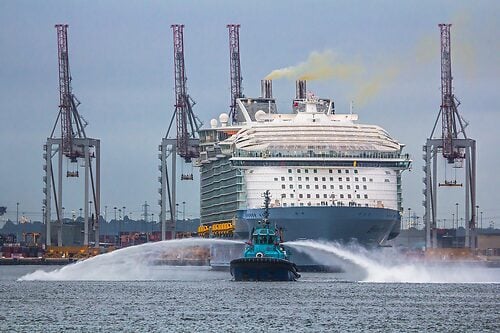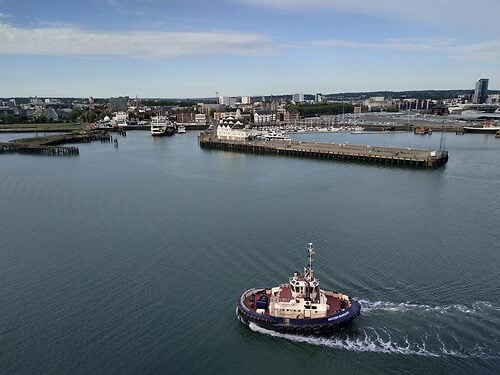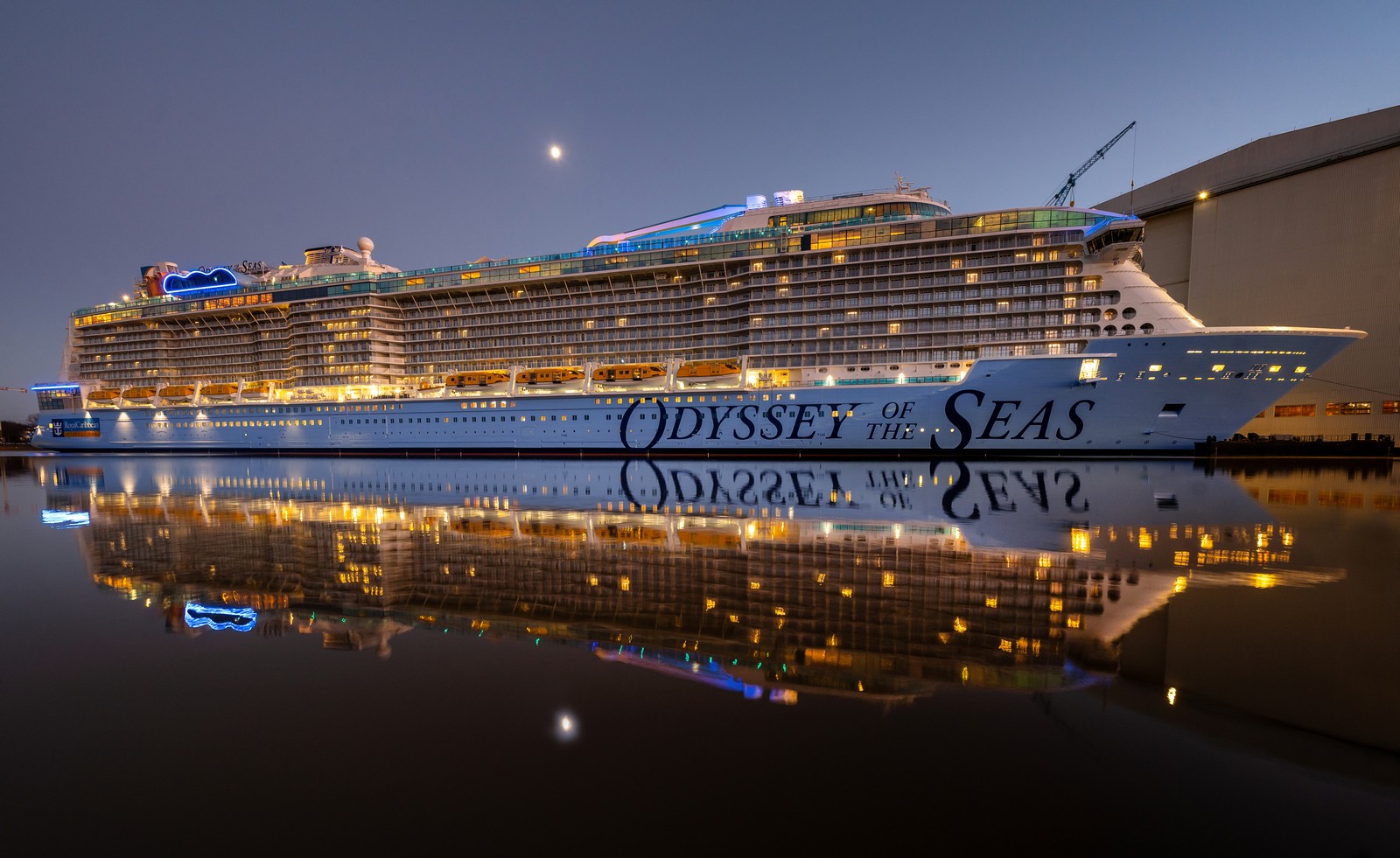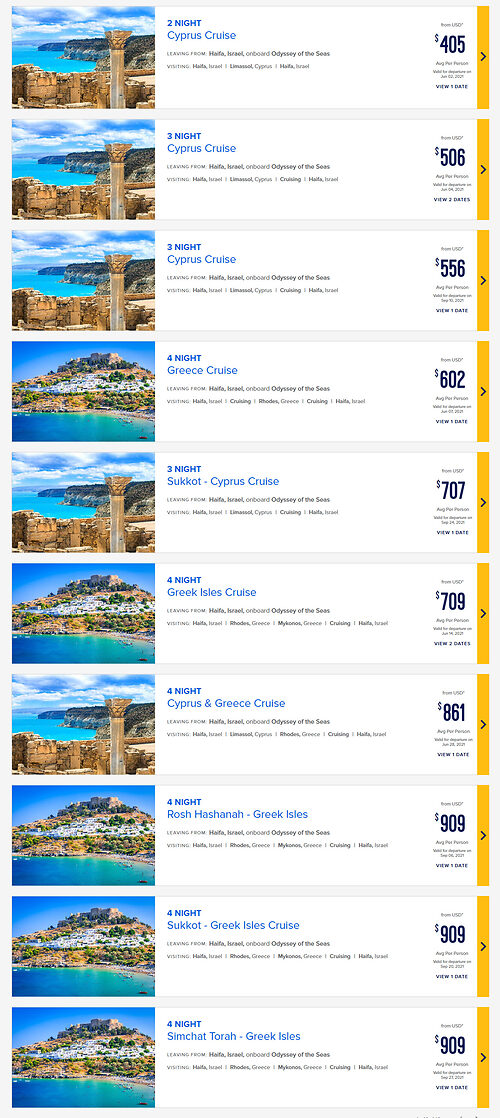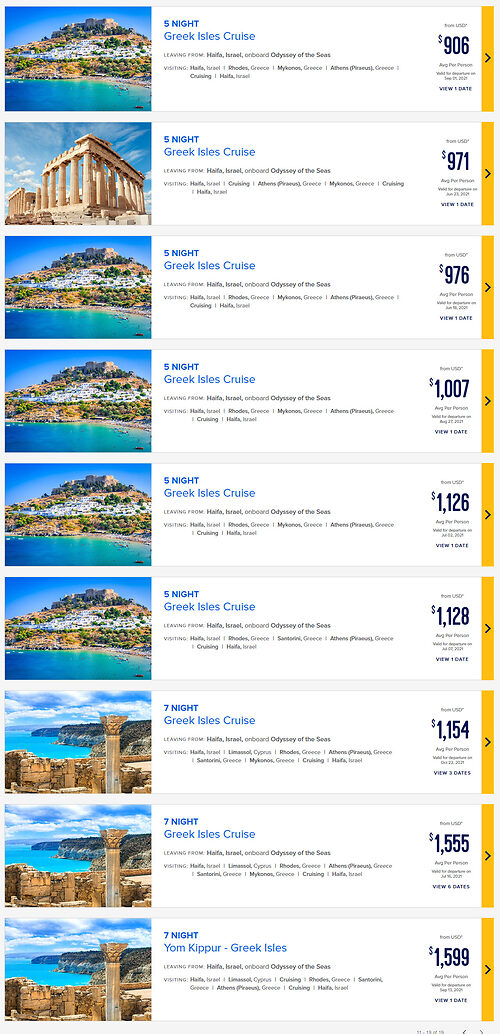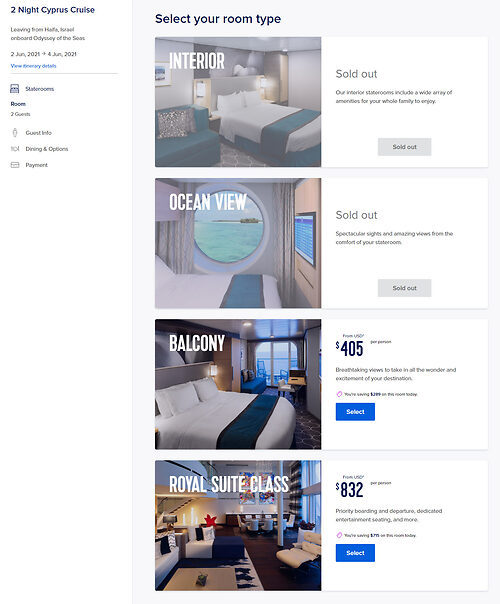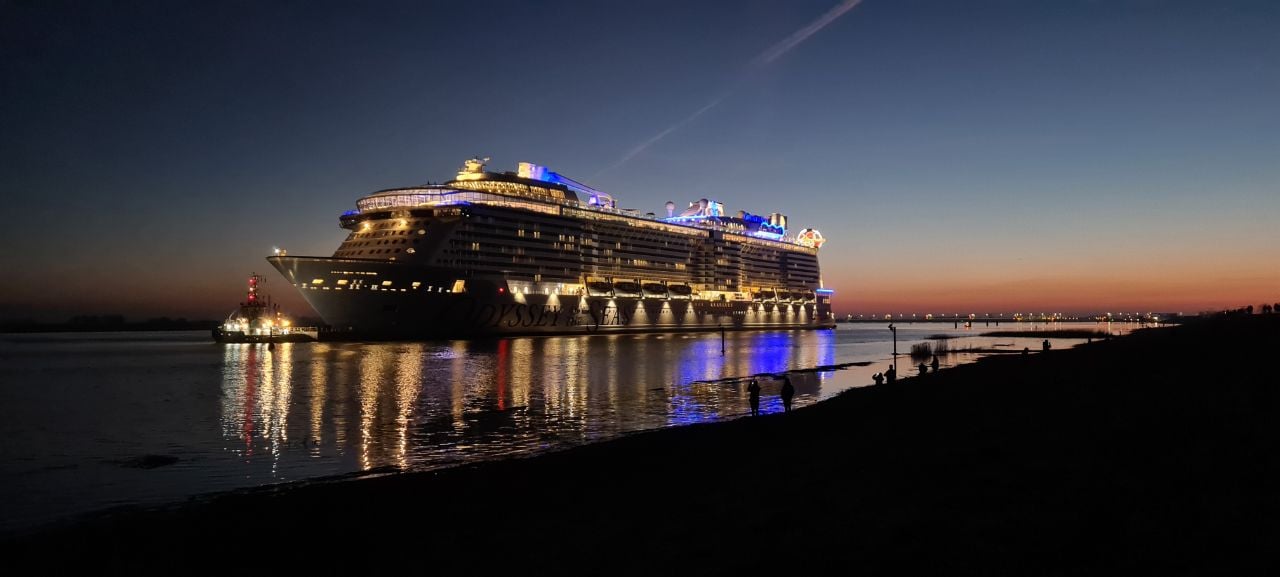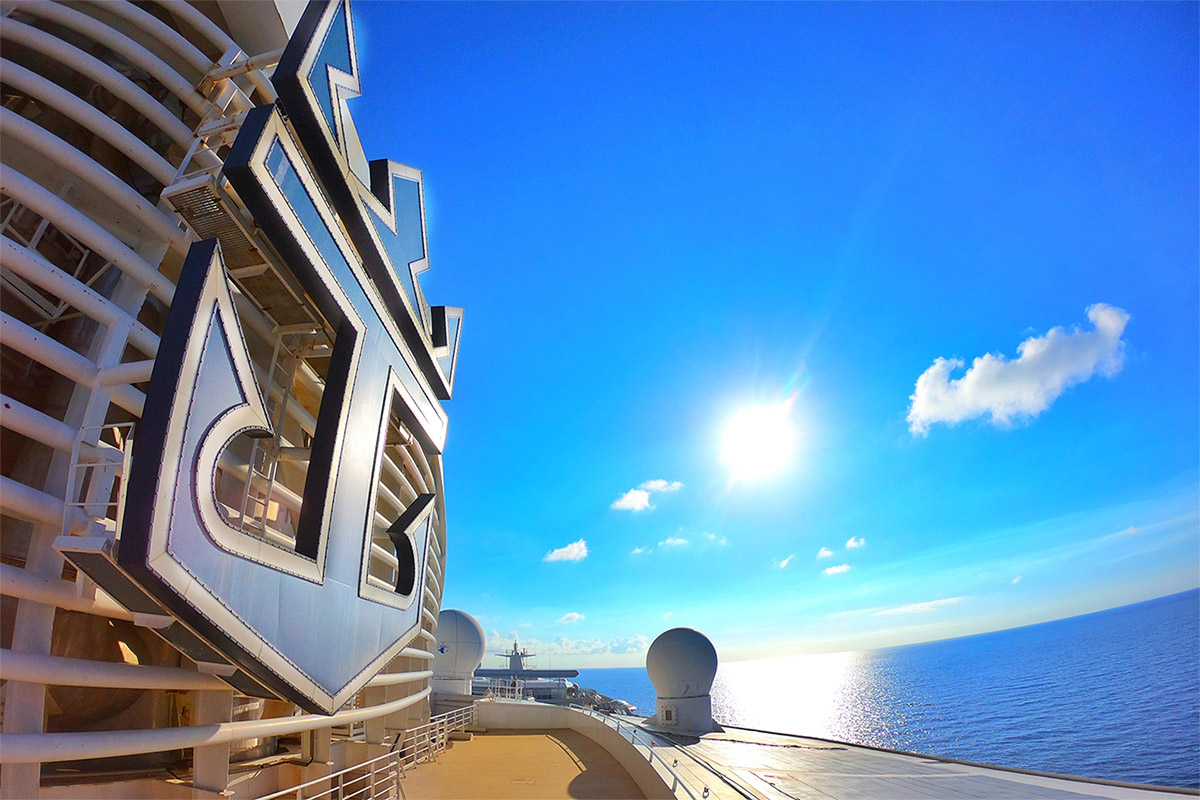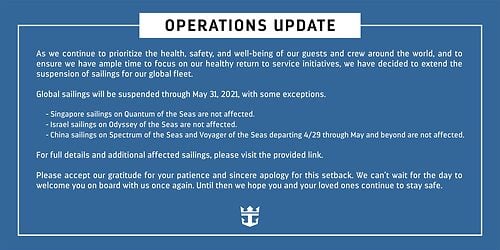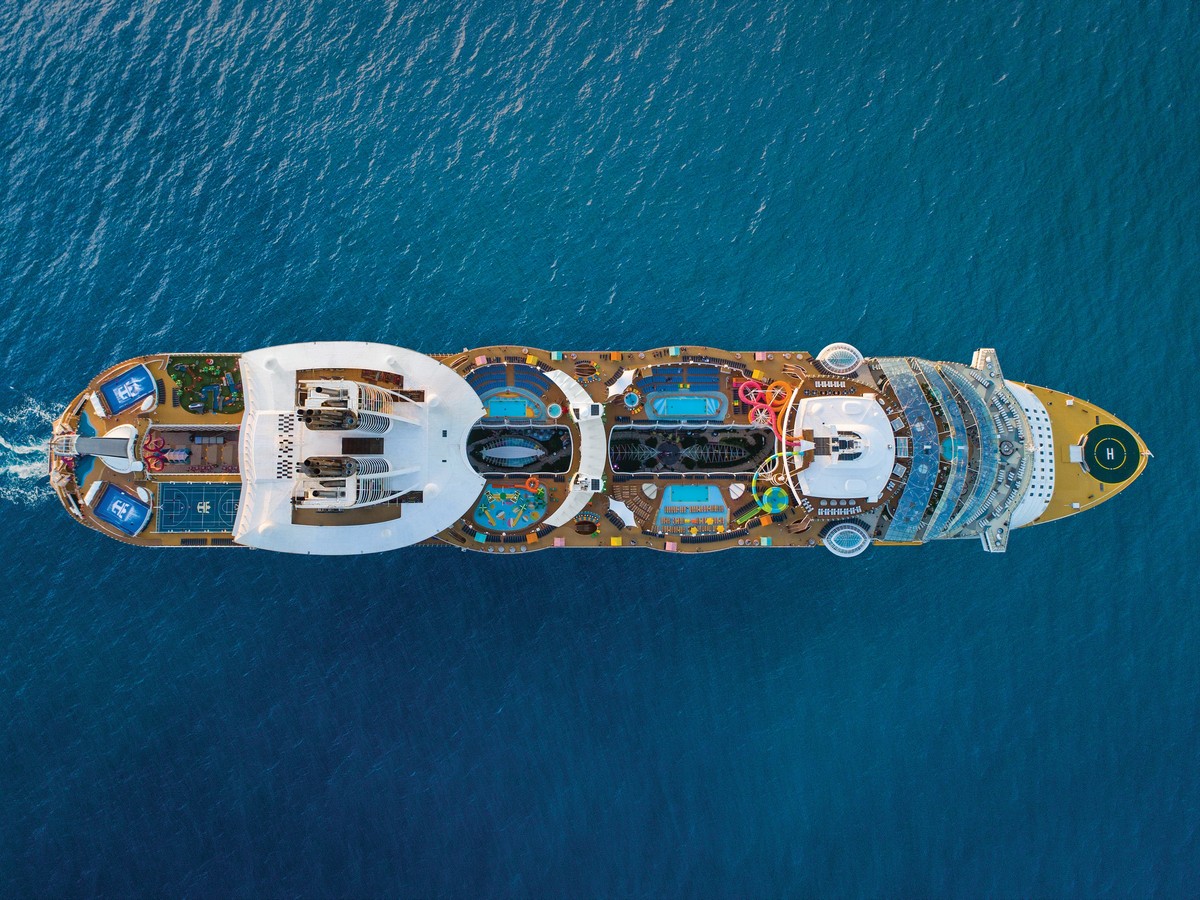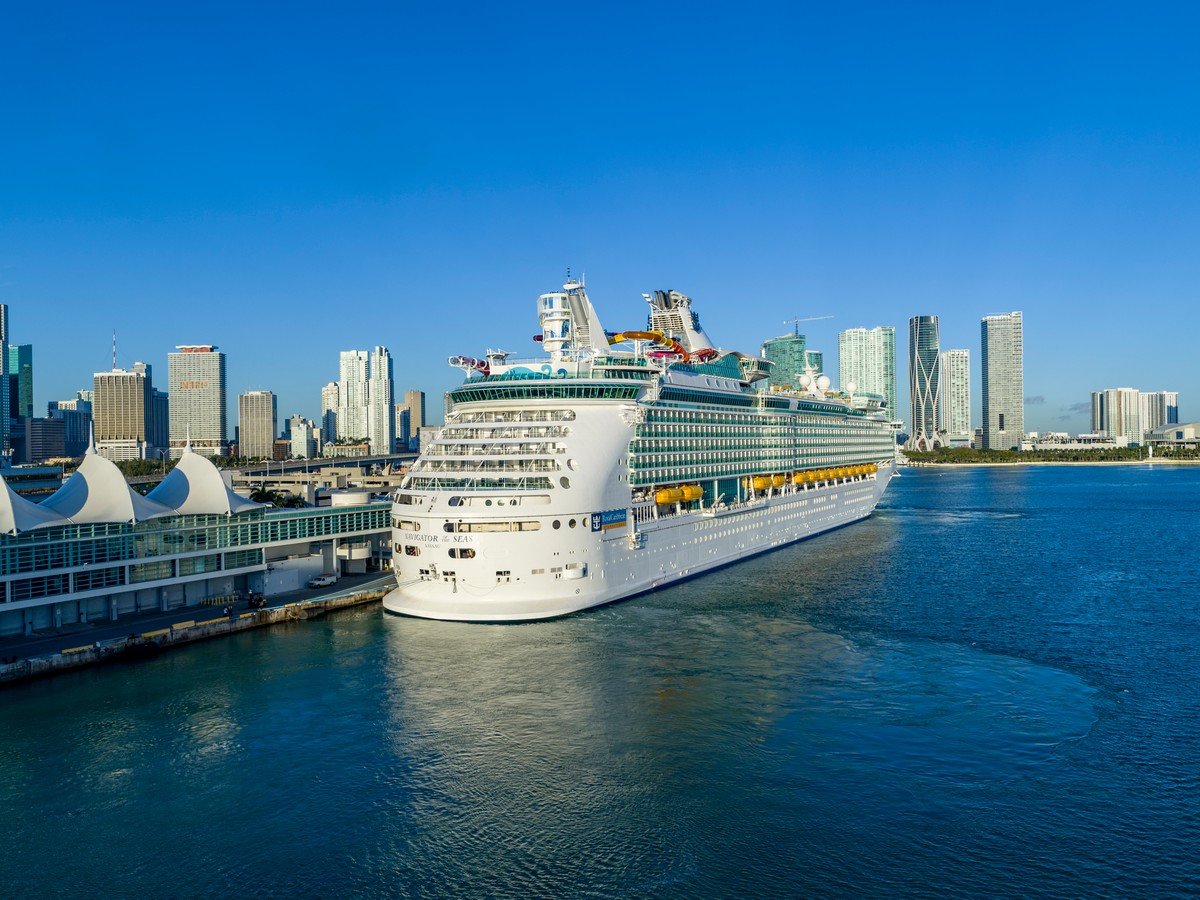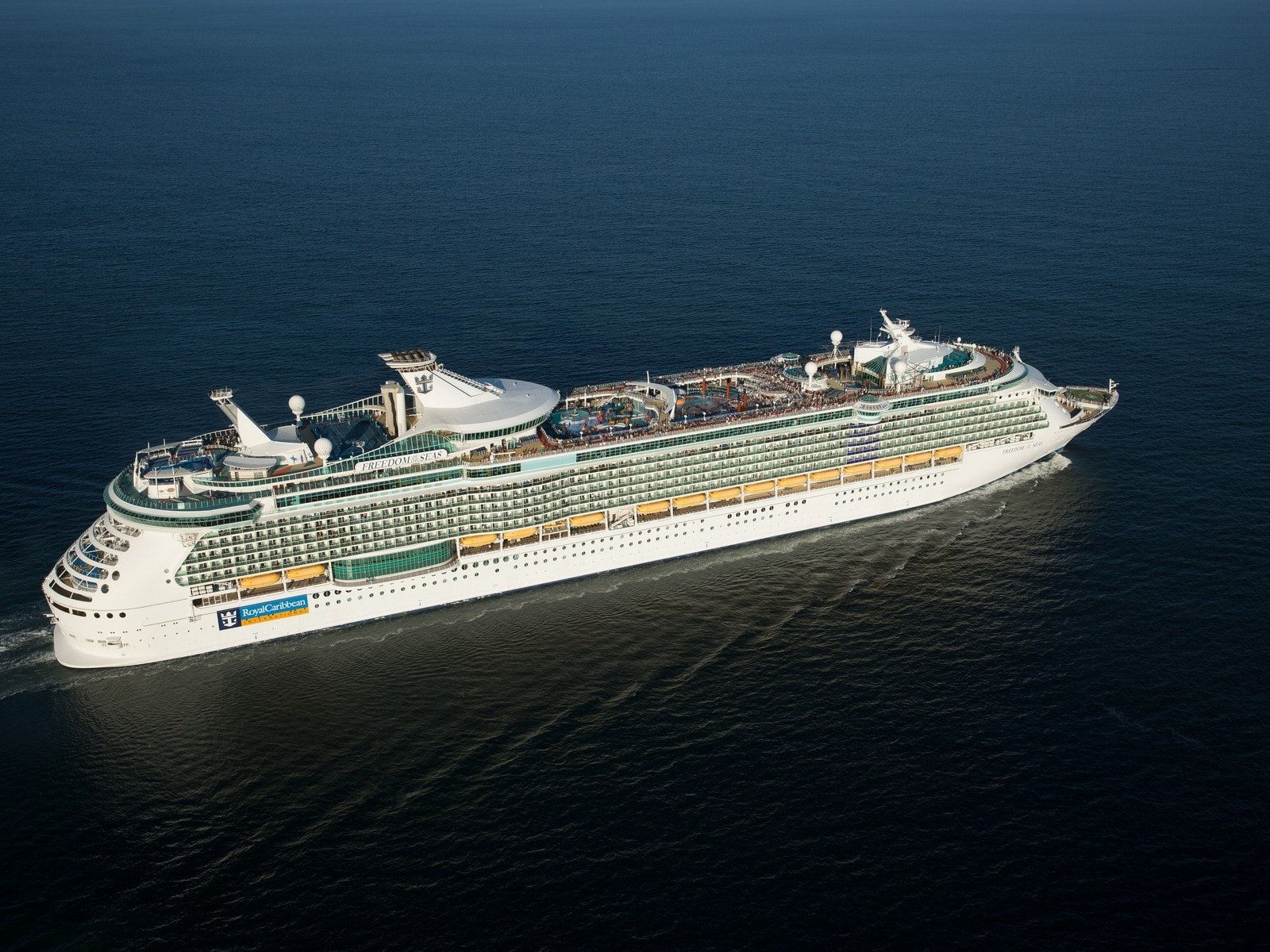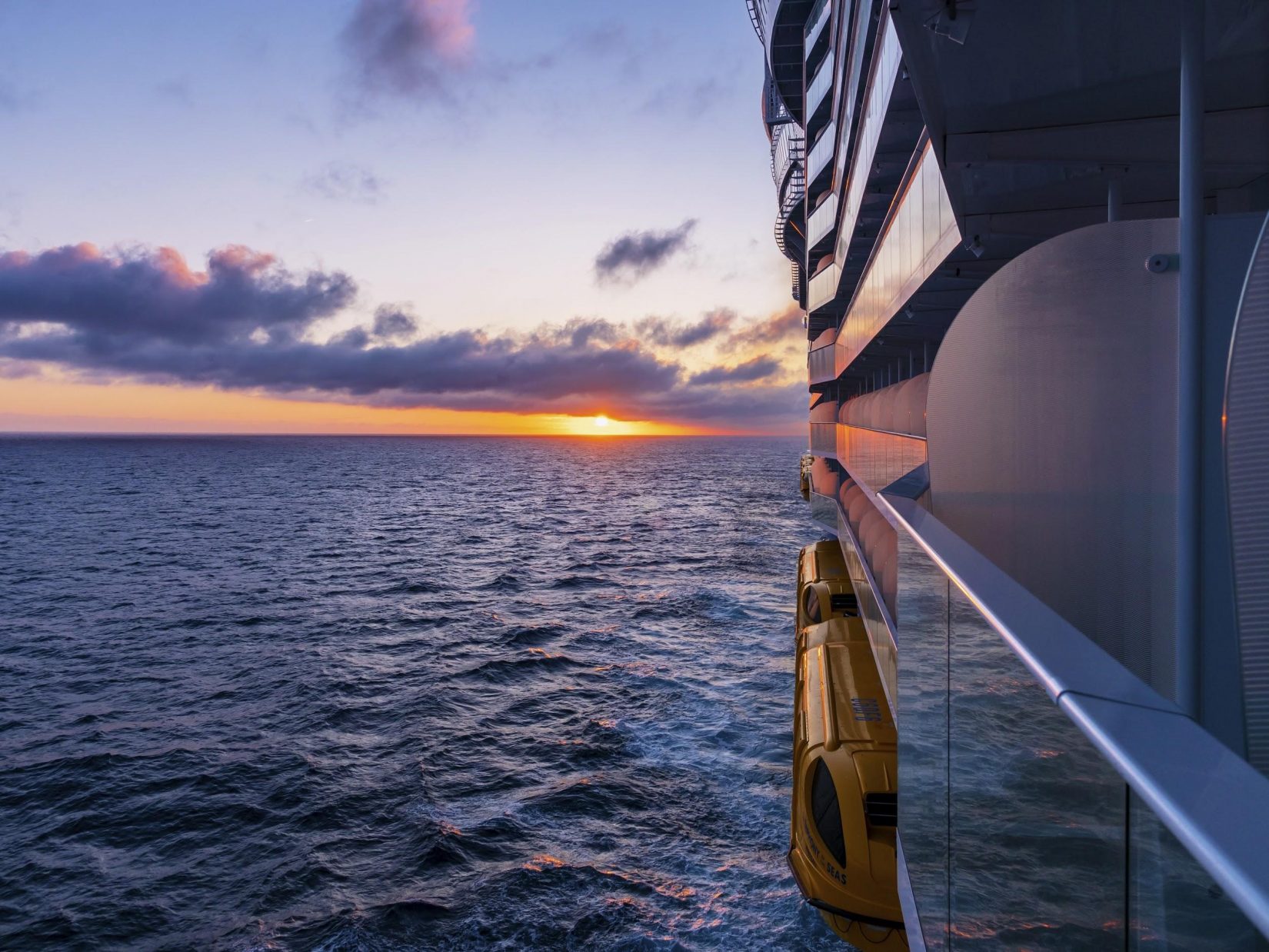It is hard to believe, but Royal Caribbean's first Radiance Class cruise ship was launched 20 years ago this week.

The Meyer Werft shipyard shared some great photos of Radiance of the Seas being built to commemorate the occasion, so I thought it would be appropriate to share with all of you 20 secrets, tips, and tricks if you are sailing on any of the ships.
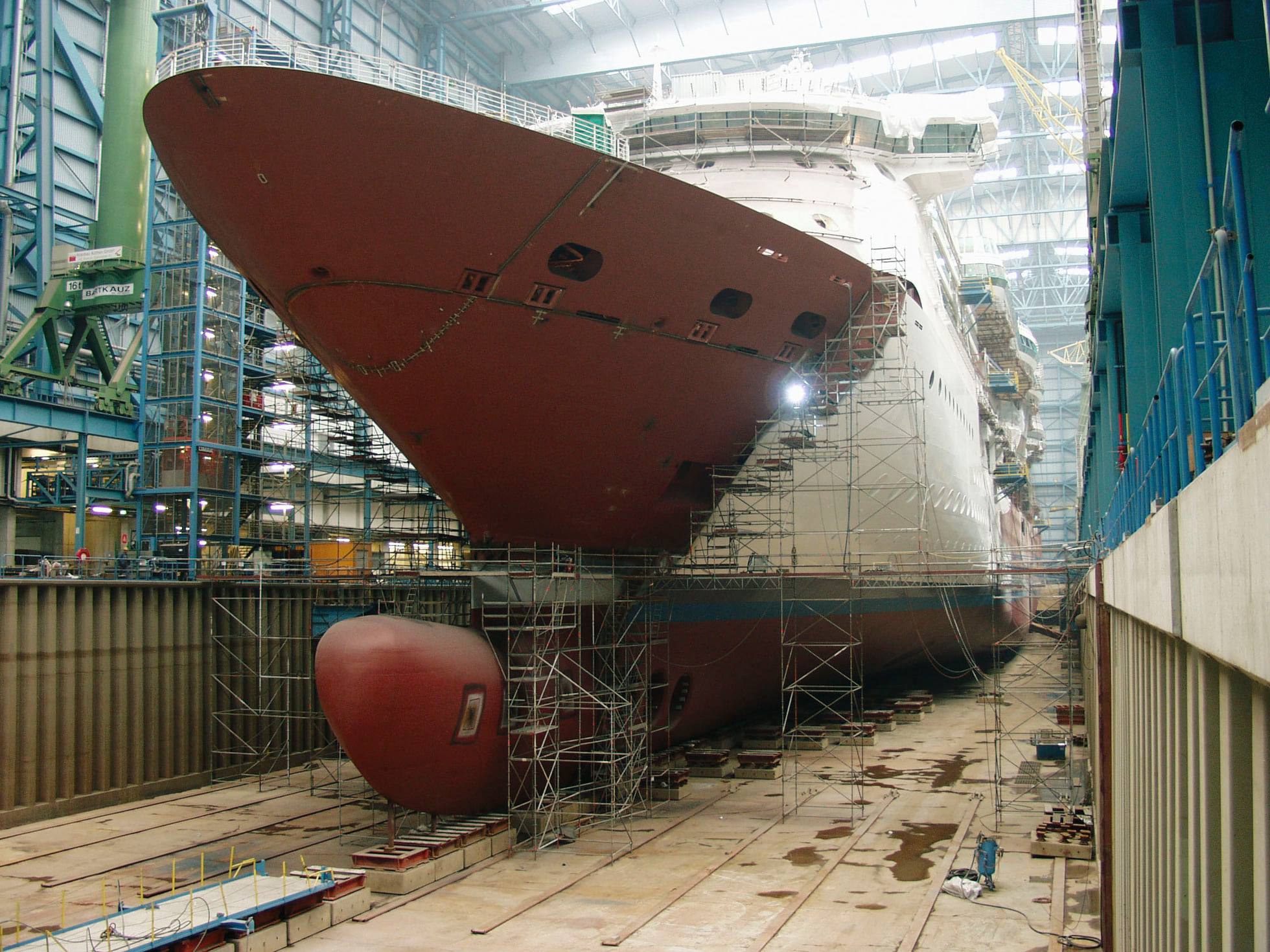
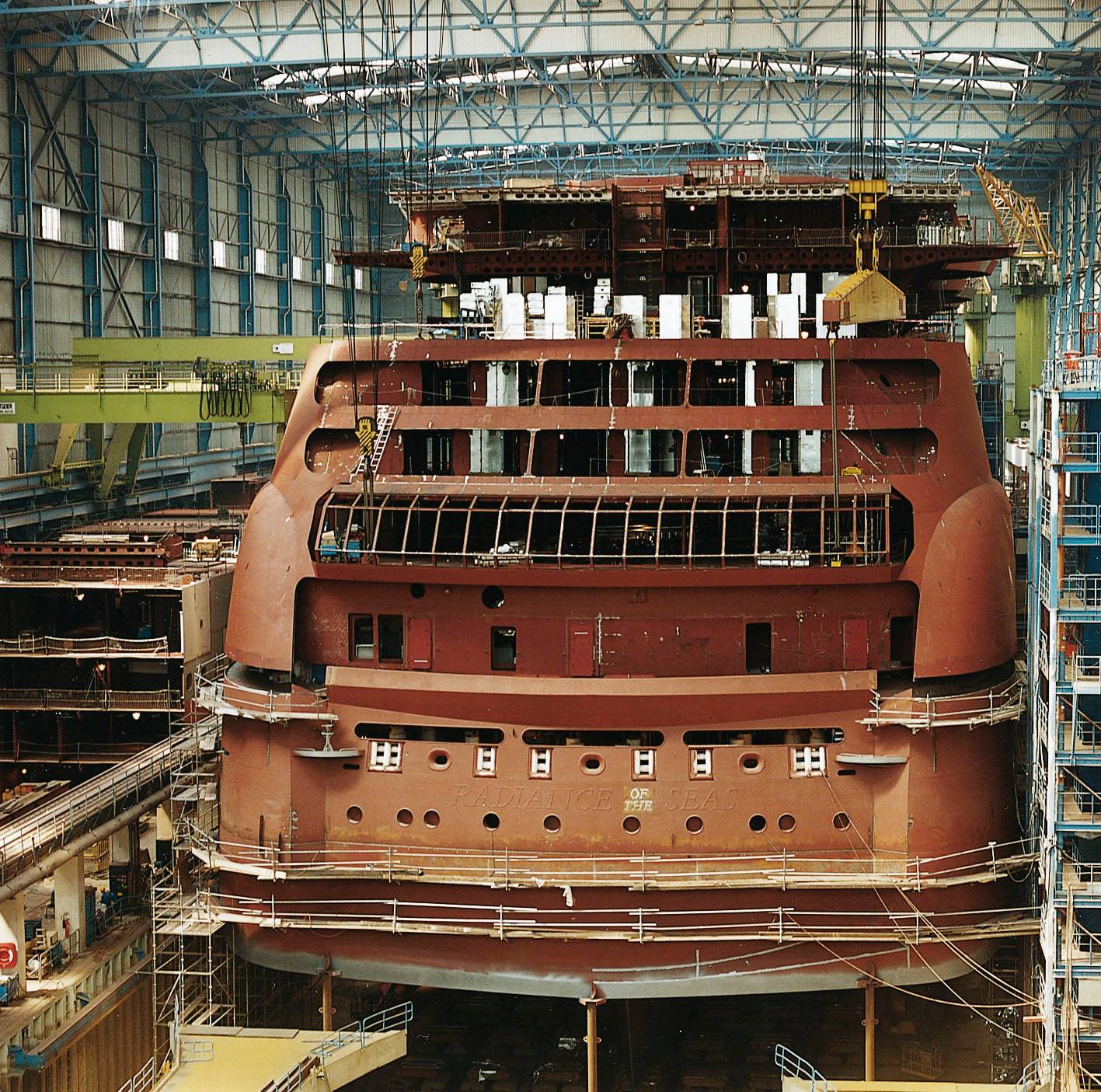
Whether you sail on Radiance of the Seas, Serenade of the Seas, Brilliance of the Seas, or Jewel of the Seas, here are some helpful tips to know about these amazing ships.
Read more: 50 Great insider Royal Caribbean tips for an awesome cruise
1. Outdoor dining
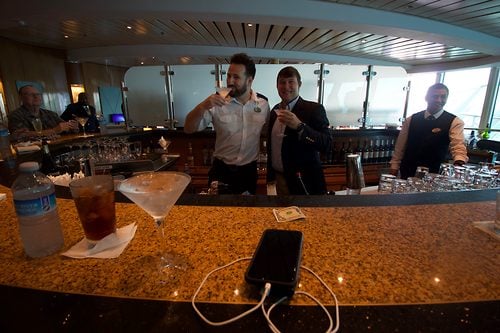
Among the many unique features on a Radiance Class ship is the outdoor seating at the Windjammer buffet.
Typically, the Windjammer is indoors on most Royal Caribbean cruise ships, but Radiance Class ships have an outdoor option as well on the back the ship. This means you can enjoy a breeze and a view of the ocean as you enjoy your food.
To access the outdoor seating, simply walk all the way to the back of the Windjammer
2. Glass elevators
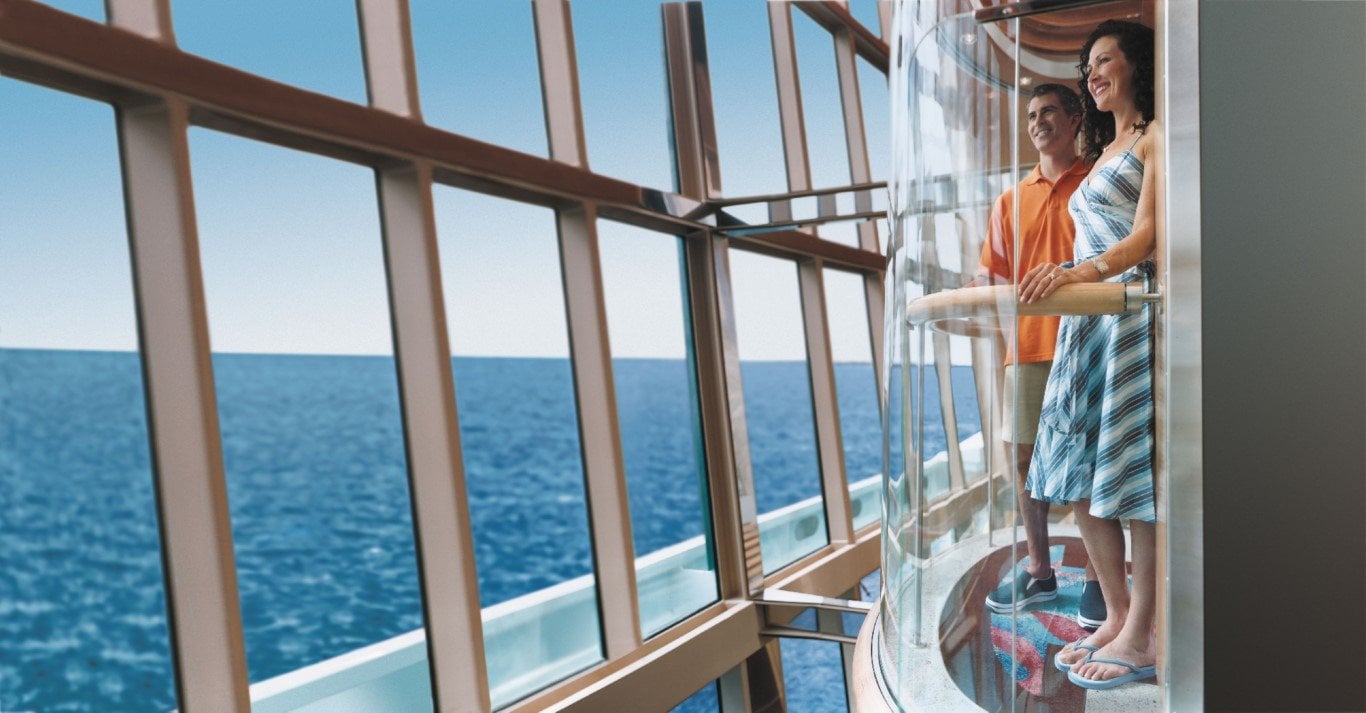
Another fun Radiance Class feature are the glass elevators.
The elevators in the Centrum area face outwards to provide views of the ocean around you. This means you get to enjoy a great view on your way up and down the ship.
3. Self-leveling pool tables
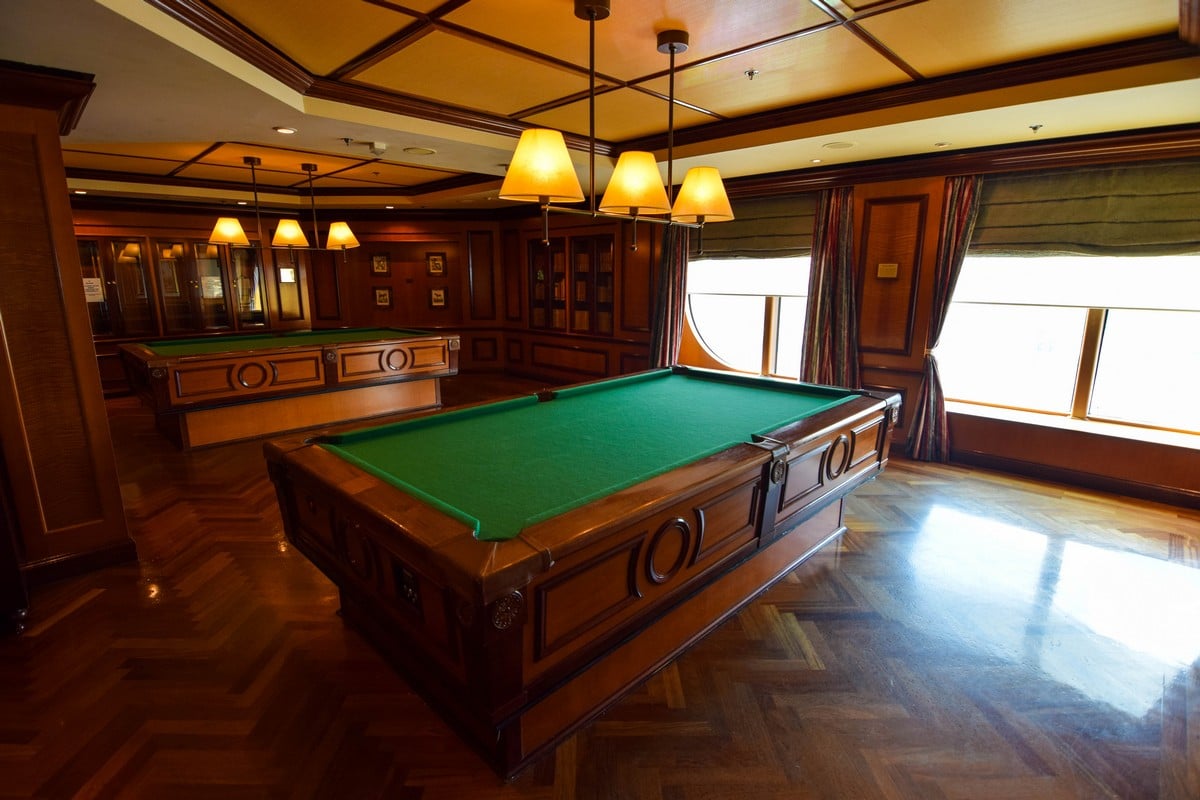
Self-leveling billiards tables are something you will only find on Radiance Class cruise ships.
When they work, these tables will move along with the ship to provide a stable playing platform if the ship is rocking back and forth.
The secret to these tables are the gyroscopes that always keep the top of the table level so the billiards balls do not roll around.
4. There's a movie theater
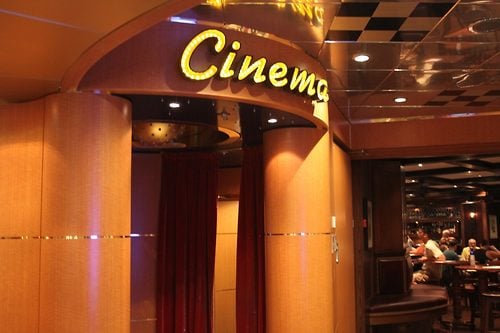
Radiance Class ships actually have their own movie theater onboard.
The cinema is located towards the front of the ship on deck 6, and shows movies throughout the day at no additional charge.
Seating is limited, so check the schedule and arrive early if you want to be there for a screening.
5. Rotating bar
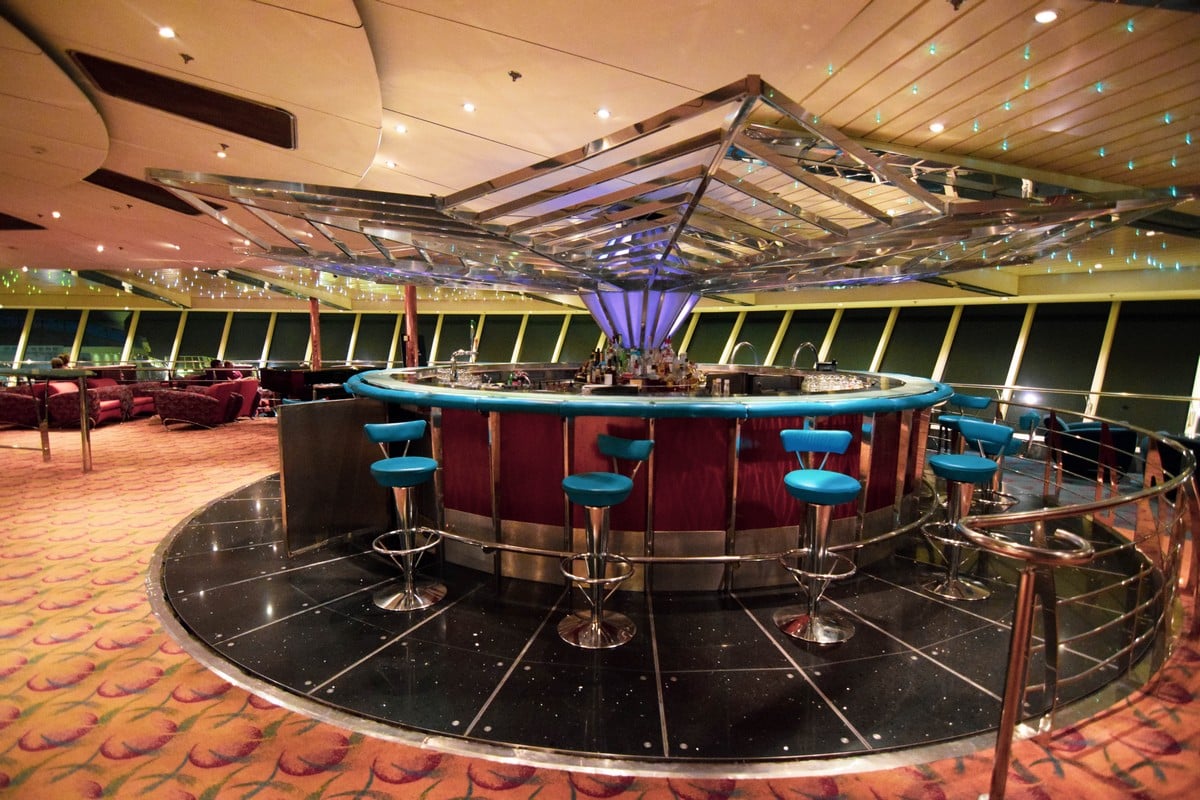
Did you know the bar at the top of the ship in the Viking Crown Lounge actually rotates?
In the evening, the bartenders can activate the spin feature which slowly rotates the bar area around in a complete circle. This usually coincides with the DJ music playing, and it is a neat little feature.
6. Retractable roof Solarium
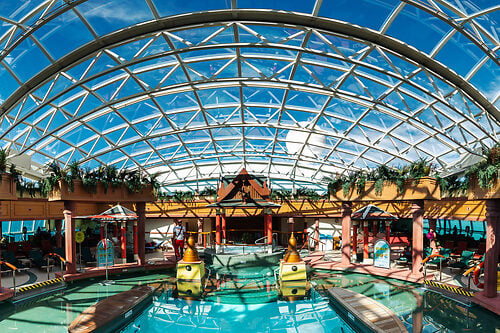
The adults-only Solarium is my favorite spot on any Radiance Class cruise ship because it seems to be just the right size, with a large and inviting pool.
The Solarium is also enclosed with a glass roof, which is actually retractable.
Admittedly, Royal Caribbean seems to rarely ever retract the roof, but theoretically they could open it up if weather conditions permit to allow a more open pool deck feel.
When the roof is closed, it keeps the Solarium the perfect temperature for enjoying the pool.
7. Sailaway from the helipad
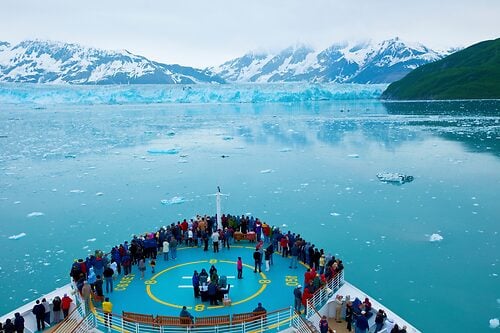
Just like Voyager and Freedom Class cruise ships, guests can go down to the helipad anytime they want during the cruise (weather permitting).
The helipad provides arguably the best vantage point on the ship, especially for sailaway.
To access the helicopter pad, go outside on deck 5 and then walk forward, climb up a set of stairs and continue walking forward until you reach the helicopter pad.
8. Dining package value
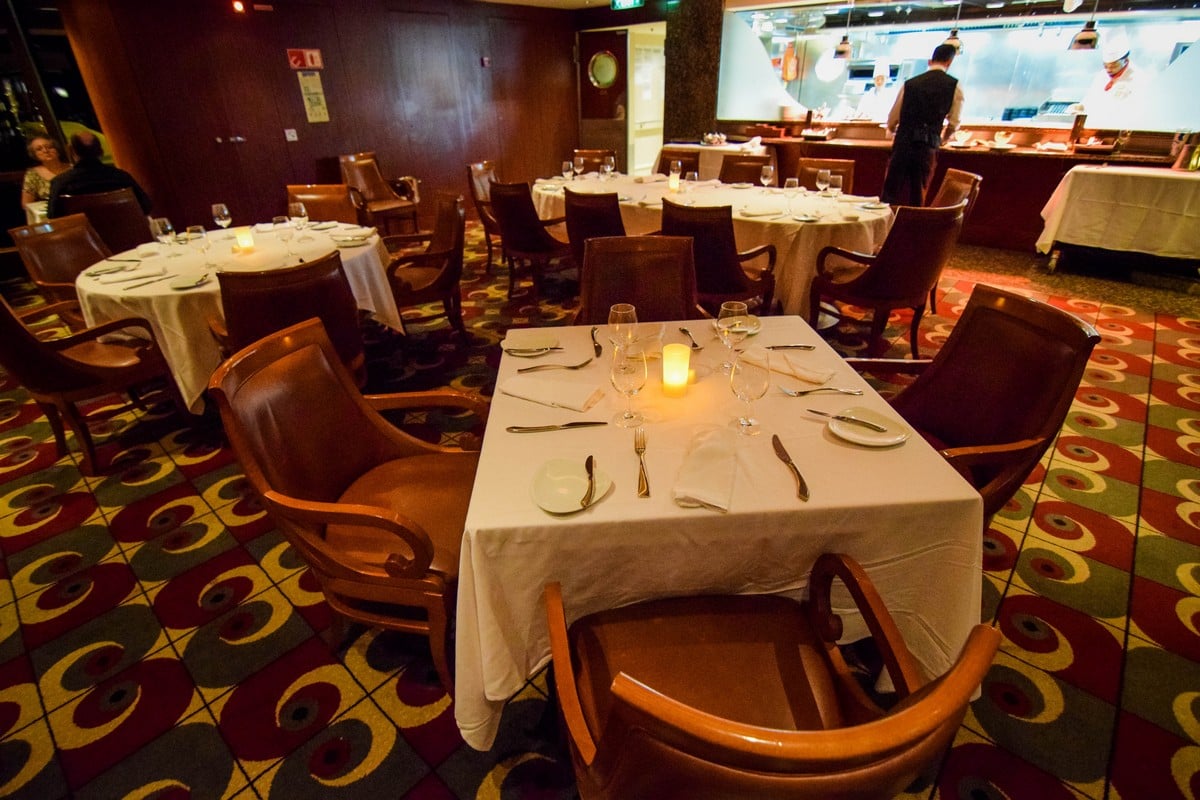
While Radiance Class ships are no where near as large as Royal Caribbean's newer ships, there are still plenty of great specialty restaurants onboard.
Royal Caribbean added more specialty dining in recent refurbishments to offer more specialty dining options.
If you think you might eat at more than 1 or 2 specialty restaurants, a specialty dining package might be a very good investment to save money.
9. Water slide for kids
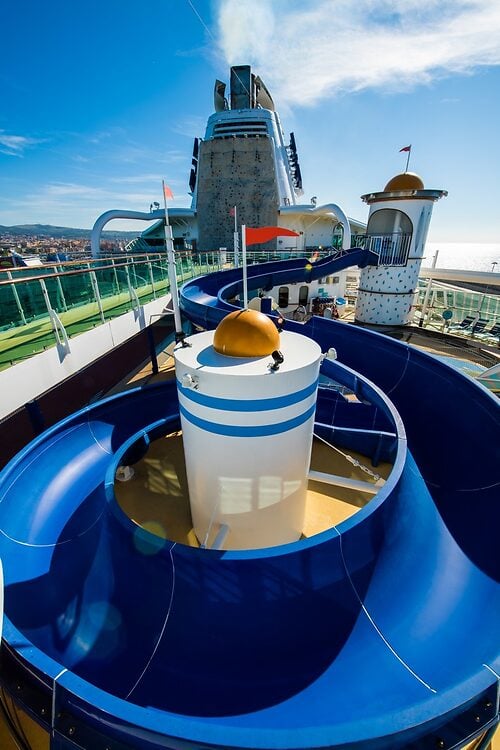
For many years, the Radiance Class was the only Royal Caribbean ships with an actual water slide, and they still have one just for younger kids.
The kids slide is complimentary and is the perfect size for younger children to get some rides in during the day.
There are limited hours for the slide, so be sure to look at the schedule for when it is open.
10. You can relax in the thermal spa
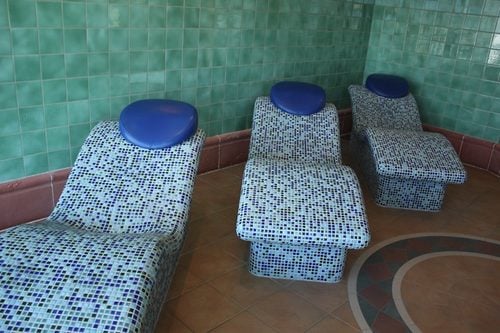
A great way to indulge while relaxing is to purchase a pass to the ship's thermal spa.
The thermal spa is a special part of the Vitality Spa which offers limited-access via passes that good for the duration of the cruise.
If you buy a pass, you can enjoy unlimited time at the hot stone chairs, rainforest shower room, infrared sauna, and steam room.
There are two thermal spa pass prices: single and couples. Price will vary depending on sailing.
11. Park Cafe
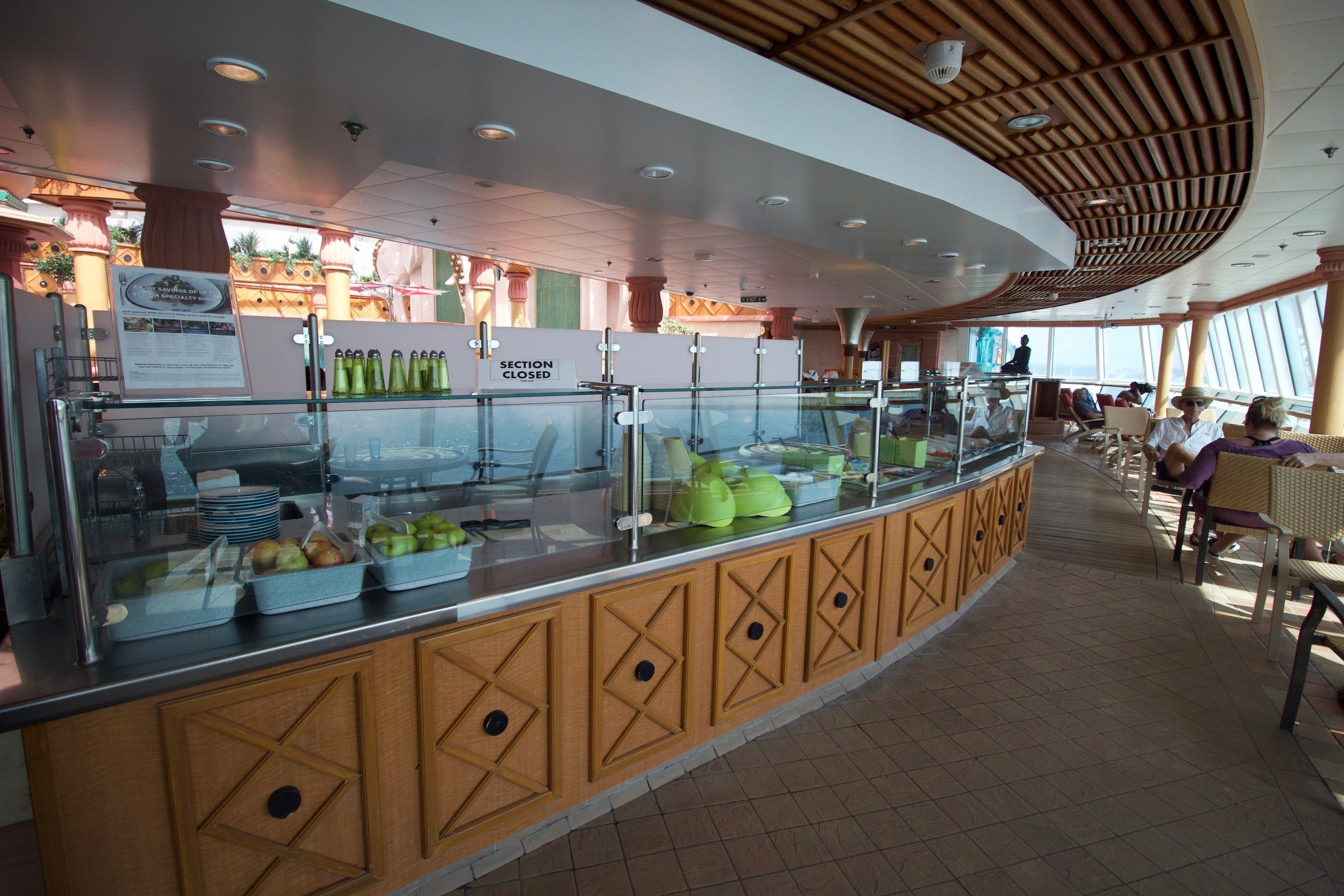
One of the best recent additions to most of the Radiance Class ships has been Park Cafe.
Located in the Solarium, you can find made-to-order salads, toasted paninis, pizza, pastries and coffee to enjoy.
Despite being in the Solarium, kids are allowed to come in and get food from Park Cafe too.
Best of all, Park Cafe is complimentary.
12. Fun activities onboard

If you like physical activity on a cruise ship, Radiance Class ships offer plenty of it.
You can tackle the 200-foot tall rock climbing wall, challenge the family to mini-golf, or hit the sports court and shoot hoops, play soccer, or engage in one of the many activities offered throughout the day by the sports staff.
Read more: Free Royal Caribbean onboard physical and fun activities
13. You can book solo rooms
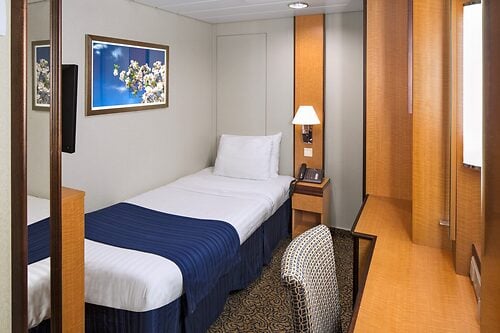
If you are a single traveler, the Radiance class are one of the few Royal Caribbean cruise ships to offer solo rooms.
Studio rooms are designed for a single traveler, and do not come with a hefty single supplement fee.
Each of the Radiance Class ships have 3 Studio Interior rooms available to book on any given sailing.
Read more: Guide to Royal Caribbean's Single and Studio staterooms
14. You can open the balcony dividers
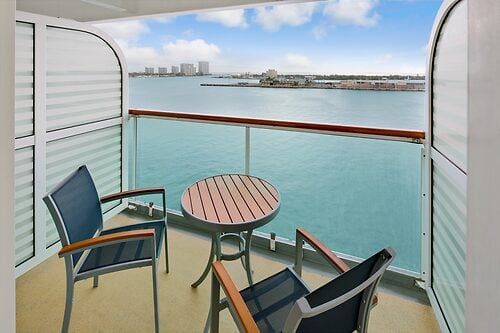
If you happen to have connecting or adjoining balcony staterooms, you can open up the balcony dividers between the rooms.
Between each balcony is a divider that grants privacy for each guest, but if you know the person in the cabin next to you, you can ask the stateroom attendant to remove the divider.
Doing this little trick means you get to enjoy a much larger and open balcony.
Read more: Royal Caribbean Secrets: opening the balcony dividers
15. Look all the way down
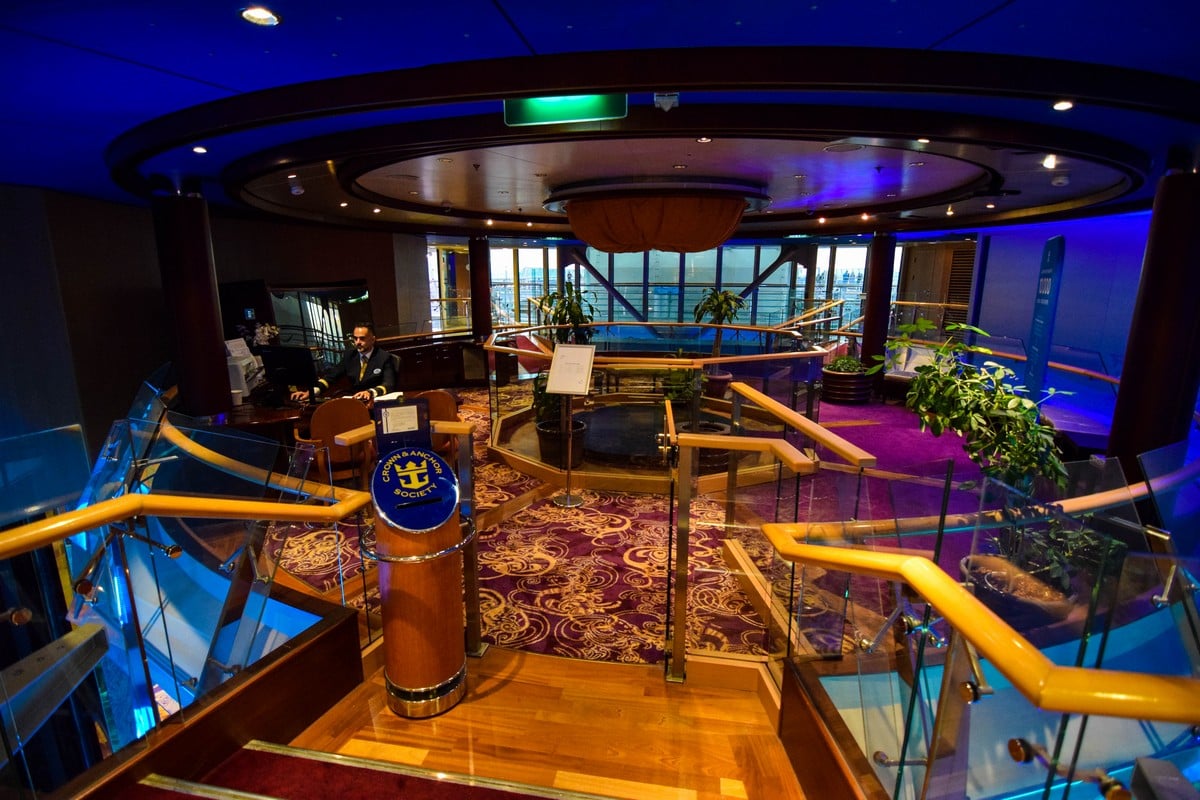
I am not sure if all ships have re-opened this area, but at least on Brilliance of the Seas one of the coolest vantage points is open to guests again.
If you go to deck 12 in the Centrum, you can go to the Loyalty Ambassador area and peer all the way down the Centrum for some amazing views.
This area was previously closed when Royal Caribbean offered aerial shows, but those shows (and equipment) have been removed.
16. Must do: Sushi making class
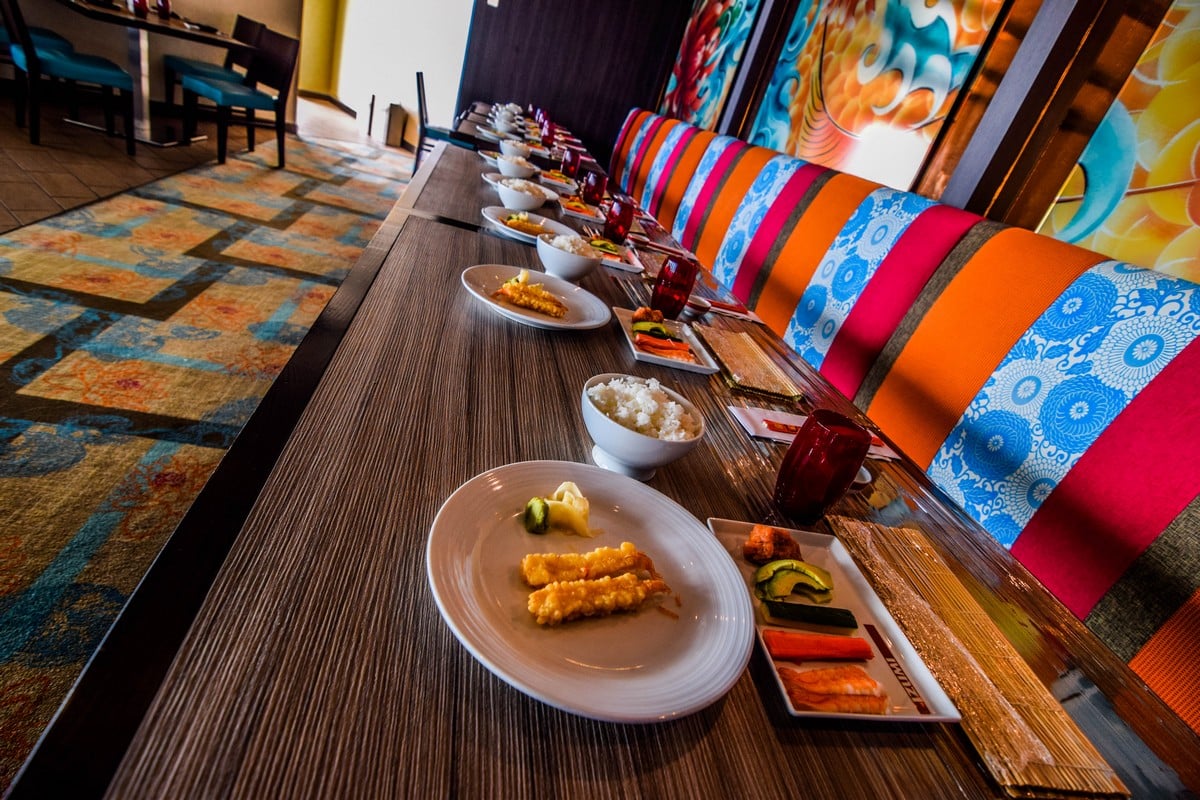
If your Radiance Class ship offers the sushi making class, it is a must-do event.
As advertised, a sushi chef will instruct you how to easily make a few different sushi rolls, and then subsequently eat your creation!
You make enough sushi to constitute a meal, so come hungry and bring your camera. It is a fun activity that I really enjoyed doing.
Read more: Izumi sushi making class on Royal Caribbean
17. Best spot for evening drinks: Viking Crown Lounge
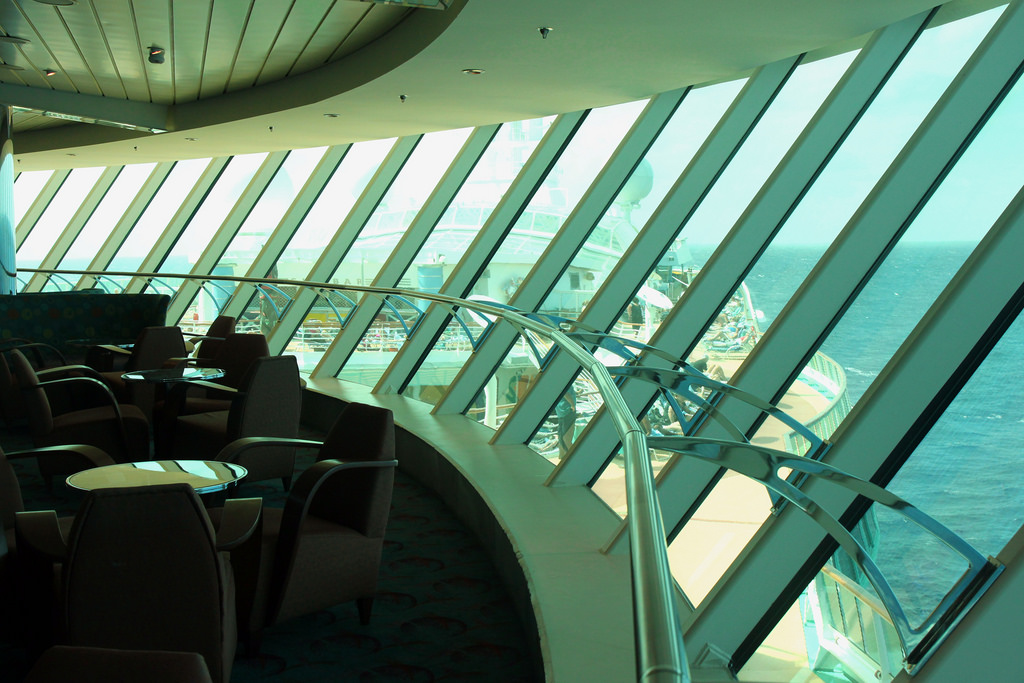
The Viking Crown Lounge at the top of the ship is beautiful, and worth taking the elevator ride all the way to the top.
The best part of the Viking Crown Lounge on Radiance Class ships is you get a fantastic view with your drink. Grab a seat, and enjoy a view while the bartender prepares it.
As a bonus, during the day when the bar may be closed, the lounge is open and a very relaxing and quiet spot to read, or enjoy views of the ocean.
18. Aft balcony rooms
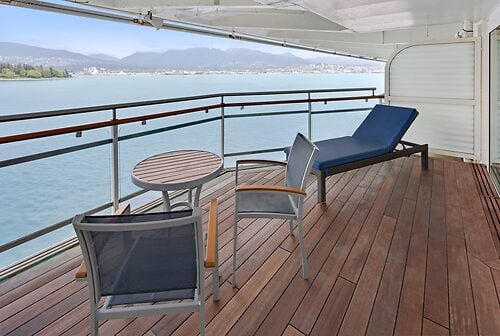
People that go on cruises a lot will wax poetically about the virtues of an aft balcony, and the Radiance Class ships are the perfect ships for these rooms.
Aft balconies refer to the balcony cabins on the back of the ship that face backwards, instead of to one side of the ship.
In many cases, these aft balconies provide expansive views around you, which is especially important if you are cruising on a Radiance Class ship in Alaska or Europe.
Aft balcony rooms book up quickly, so be sure to snag one before they sell out.
19. Best spot for evening fun: Schooner Bar
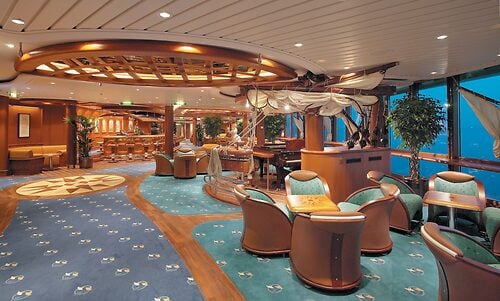
The Schooner Bar is an institution on all Royal Caribbean ships, but the layout of the Schooner Bar on Radiance Class ships might be the best yet.
LIke all Royal Caribbean ships, tthe Schooner Bar has a nautical theme that features a piano and views of the ocean. Each evening, you will find plenty of live music to enjoy throughout the evening.
The bar area has stool seating that extends all the way around.
20. GTV
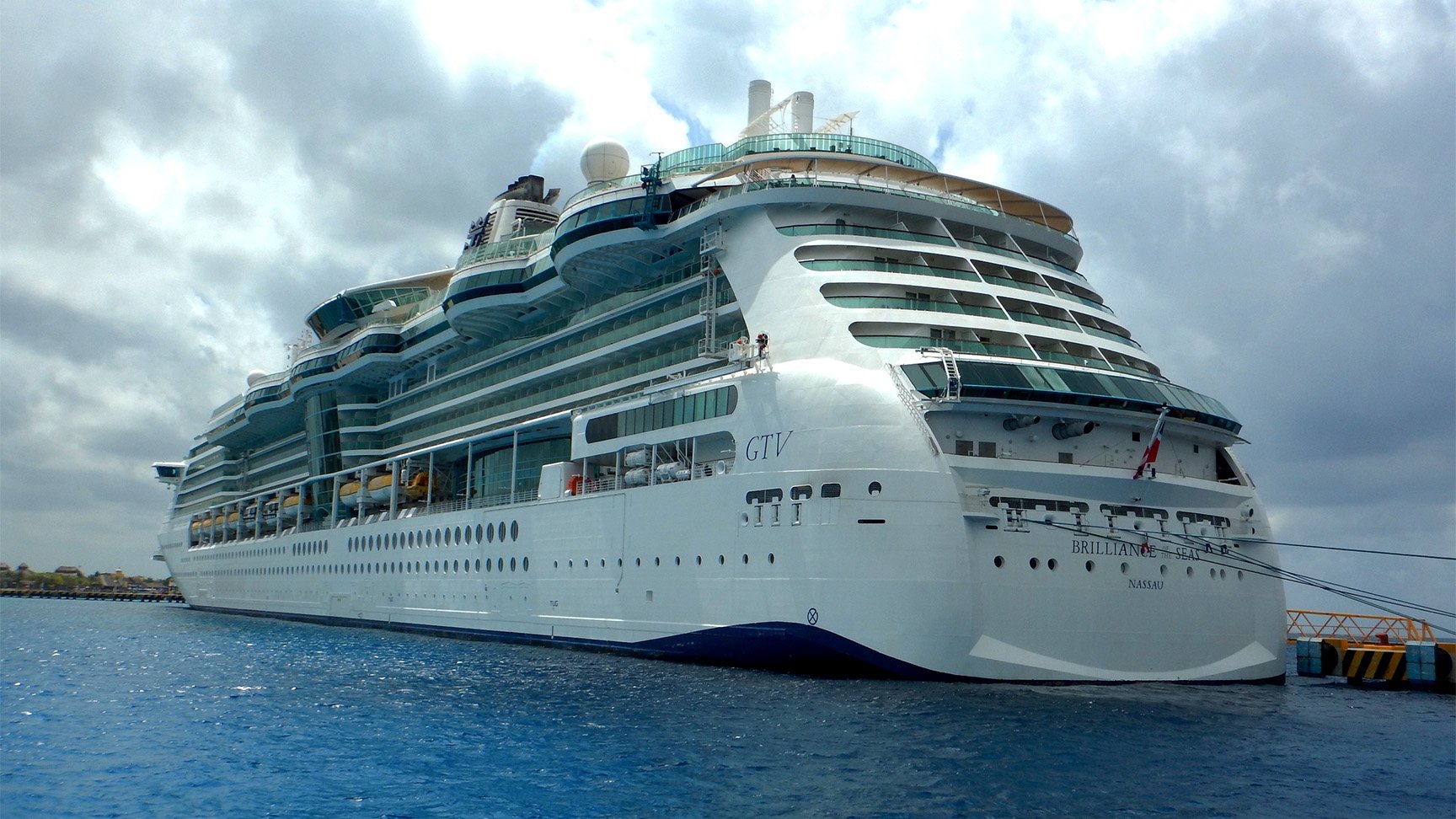
You may notice on the side of Radiance Class ships the letters "GTV", which you won't find on any other Royal Caribbean ship.
GTV stands for gas turbine vessel, which is an environmentally-conscious approach to ship propulsion.
The Radiance Class was the first ship in Royal Caribbean's fleet to have a General Electric gas and steam turbine as its primary source of power. The power plant is more efficient and cleaner than traditional diesel-powered engines on most cruise ships employ.
